 Royal Navy (1930-34)
Royal Navy (1930-34)E class: Echo, Eclipse, Electra, Encounter, Escapade, Escort, Esk, Express
E Flotilla Leader: HMS Exmouth
F class: Fame, Fearless, Firedrake, Forester, Foresight, Fortune, Foxhound, Fury
F Flotilla Leader: HMS Faulknor
WW2 British Destroyers:
V class | W class | W mod class | Shakespeare class (1917) | Scott class (1818) | A/B class (1926) | C/D class (1931) | E/F class (1933) | G/H class (1935) | I class (1936) | Tribal class (1937) | J/K/N class (1938) | L/M class (1940) | Hunt class DE (1939) | O/P class (1942) | Q/R class (1942) | S/T/U/V/W class (1942) | Z/ca class (1943) | Ch/Co/Cr class (1944) | Battle class (1945) | Weapon class (1945)Hunt Type I class DE (1939) | Hunt Type I class DE (1939) | Hunt Type I class DE (1939) | Hunt Type I class DE (1939) | Captain class DE (1941)
The E and F class destroyers were a next step in destroyer design, with modest improvements over the C/D class but near-repeats overall. In naval recoignition they were nearly indistiguishable. Ordered as part of the 1931 naval programme for the E class, the F class was ordered as part of the 1932 naval programme, and the only changes concerned the hull and armament, including minelaying abilities as well as an ASDIC and 2-speed destroyer sweep making them well rounded ships. What made them interesting is their very active career onb all front, from Norway to the Arlantic, Mediterranean and even the Pacific, with ten sunk in action on a total of sixteen destroyers plus two modified flotilla leaders (also seen here).
A very active career
A bit unusually were start this long post with an verview of their amazing career, since technically they were near-repeats of the C-D, so no long developmental introduction, details are in the design chapter. The E-F were, like the following G-H-I, among the bustiest, most decorated and battle-hardened British destroyers of the second world war. As a group of 18 destroyers built for the Royal Navy they were initially assigned to the Home Fleet, but shortly after being completed they were reassigned to the Mediterranean Fleet, being vigilant and ready to defend British citizen’s right during the Italian invasion of Abyssinia of 1935–36. They enforced the Non-Intervention Agreement during the Spanish Civil War in 1936–1939. By August 1939 the E-class were escorting merchant ships for the Western Approaches Command, and the F class were assigned to escort Home Fleet warships. In March 1940 alone in this role they managed to sink four U-Boats but with a first loss.
Next many took part in the Norwegian Campaign in April–June 1940. They managed there to sink a German destroyer and a U-Boat. Later two E-class helped evacuating Allied troops from Dunkirk by May–June 1940 (Operation Dynamo). Most F class were sent to Gibraltar by late June as Italy entered the war, an joined the Western Med fleet, Force H. They took part in Operation Catapult, attack on Mers-el-Kébir. In September 1940 they took part in the ill-fated Battle of Dakar managing to sink three Vichy French submarines. Later in 1940 they sank an Italian submarine but lost two to mines and torpedoes. Next they were part in many Force H convoy escort msisioned to Malta all along 1941, sinking an U-Boat, but loosing one to Stukas. Three E-class next were sent in northern waters to escort the first convoys to Russia by late 1941, three were transferred to the Eastern Fleet and saw the start of the Pacific war.

HMS Fury in Dunkirk.
Two were sunk by the Japanese forces in early 1942, two F class being transferred a replacement. Most remaining F class reinforced the Arctic convoy and were present in several engagements with German destroyers, they also claimed another U-Boat. Others were detached back to Malta convoys, one more lost. Then the remainder were sent to escort convoys in the north Atlantic from late 1942 to early 1943 and claimed two more U-Boats. Three were transferred to the Royal Canadian Navy. Four E-F returned to the Mediterranean by mid-1943 being present for Operaiton Husky, the invasion of Sicily and the Italian campaign until early 1944. One was leased to the Royal Hellenic Navy, remaining active as a firm purchase until 1956.
This remaining in the Atlantic meanwhile claimed two more U-Boats in 1944 and by May they were back in the channel fleet to prepare for D-Day. They sank two more U-Boats ther, but lost one F-class to a German mine as R-Boote were quite active in the area. Afterwards they returned to the North Atlantic, some after long refits in Canada as British yards were full. In the meantime they had been rearmed and modernized with new radars and better AA, more depth charges.
The three Canadian ships destroyers escorted convoys and transported troops back to Canada in 1945-46 and ended sold for BU in 1947 like the remaining vessels, but another which was sold to the Dominican Navy in 1949, active until 1968, beating the Greek destroyer by a decade.
Design of the class
Hull and general design
As said above, the E-F class were near-repeats of the C-Ds, with similar hulls and identical general appearance. Still they were niot considered as a “superclass”. The E class were ordered as part of the 1931 Naval Construction Programme, and F from the 1932 Naval Construction Programme 1932 as repeat D class with minor changes. Two were modified also as “minelayer destroyers” with rails to carry and lay down 60 mines. The F class were repeats of the E class with minor differences:
All were fitted with ASDIC (sonar) as standard (unlike previous class which separated ASDIC/TSDS). They were also fitted with strappings to install an optional Two-Speed Destroyer Sweep (TSDS) minesweeping gear and act as minesweepers, but this was never done.
Like the D class and unlike the A-C thet had enlarged hulls mainly to procure larger fuel tanks. However instead of a QF 3-inch 20 cwt anti-aircraft gun they ended with two quad Vickers tandem heavy machine guns instead. They also kept the director-control tower of the A/B class, but improved. The split squared bridge arrangement with with compass platform and wheelhouse separated from the chartroom and director tower was kept. All in standard had two depht charge racks for 30 in all.
Details were refined to even further simplify construction across yards. They displaced more, than the D class at 1,405 long tons (1,428 t) at standard load and 1,940 long tons (1,970 t) at deep load. To compare the D class were 1,375 long tons (1,397 t) in standard load, 1,865 long tons (1,895 t) at deep load.
The difference was due to the need for more range, and the installation of larger fuel tanks. The main guns mounts were also more complex and heavier (see later) which required a growth of displacement and as consequence the hull had an improved form resulting on many model tested in a ship-research bassin.
The other important difference was to enclose the 2nd boiler room by a thick watertight bulkhead and two smaller, so all three boilers were much more immune to damage tolerance. This did not prevented heavy losses, though.
They had however the exact same hull in general dimensions, with an overall length of 329 feet (100.3 m), beam of 33 feet 3 inches (10.1 m) and draught of 12 feet 6 inches (3.8 m) aft, fully loaded. The design details of the hull and bridges were the same, albeit the shape was modified, and the new armament imposed some changes, so overall the yard had no trouble adjusting their existing plans to this new class. Design phase was short.
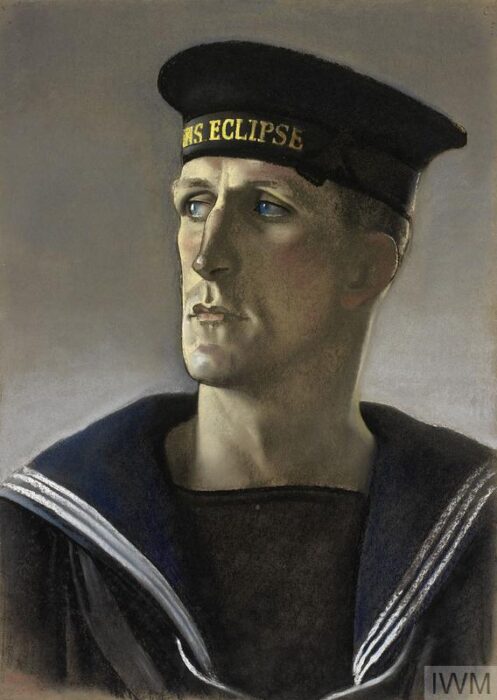
uniform, the title of his ship displayed on his cap. Copyright: © IWM. Original Source: http://www.iwm.org.uk/collections/item/object/15154
Their complement remained the same with 145 officers and ratings, more than the 138 on the A/B class and again the leaders with extra staff (see below).
The overall design called for an upper deck with a well rounded prow with substantial flare, limited slope, limited slanted bow, almost straight hull ending with a rounded bow with an elliptic curve starting aft amidship around number two funnel. The greater beam was reached around the main AA gun bandstand and between funnels, and from there the lines went forward in almost straight lines to the bow at the waterline. The counterkeels went from the bridge to the aft TT bank. The rudder still had the same trapezoidal shape and the upward stern keel started at the height of “B” mount.
Seen from profile, the silhouette was very much like the A-B still, with a superstructure forward and aft supporting superfiring A-B, X-Y gun mounts, with deflectors on each upper position to protect gun crews on deck. The bridge had still the same square shape, with an enclosed level and open upper bridge with windows but no framing. The fire control turret and telemeter were behind. Two masts, raked the same way as the two equal funnels, the forward one slightly taller, and the foremast taller than the aft mainmast. The foremast carried a spotting post. The bridge’s wings were shorter than the deck’s width and the bridge block overhanged on the lower deck. Three service boats were carried, a whaler, a cutter and a yawl under davits. Life rafts were also carried in complement.
Total cost, E class, 1934 was £246, 664, excluding government-provided armament, fire control, fuel and food.
Powerplant
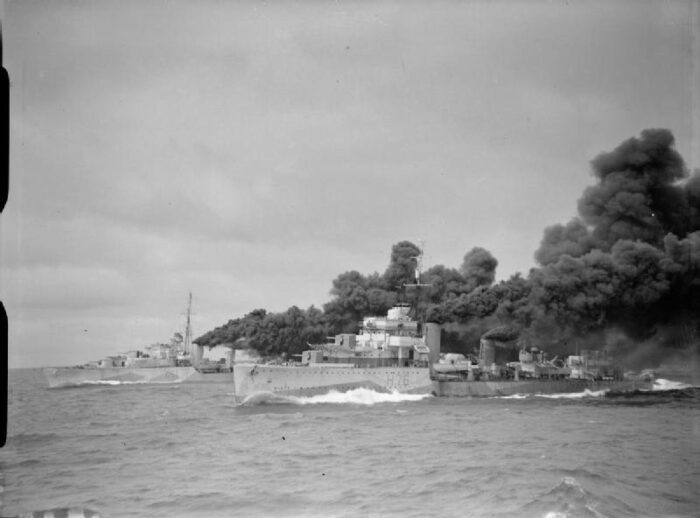
Fury and Ashanti making smoke on 25 june 1942
The E-F were seentially powered by two Parsons geared steam turbines, connected to a propeller shaft each, and they used steam from three Admiralty 3-drum boilers operating at a pressure of 300 psi (2,068 kPa; 21 kgf/cm2) and at a temperature of 620 °F (327 °C). The turbines developed 36,000 shaft horsepower (27,000 kW), like the former C-D class, but due to the extra weight due to modified fuel tanks, they had a top speed of 35.5 knots (65.7 km/h; 40.9 mph) and no longer 36 knots. However they carried 470–480 long tons (480–490 t) of fuel oil for a better range of 6,350 nautical miles (11,760 km; 7,310 mi) at 15 knots (28 km/h; 17 mph) versus 5,870 nmi (10,870 km; 6,760 mi) at 15 knots (28 km/h; 17 mph) for the C-D classes, so quite an improvement in range, worth the slight loss in speed.
They were considered as good steamers, seaworthy, responsive at the helm, in general presenting the same qualities going to the early 1920 Thornycroft prototype.
Armament
As said above, two were transformed as minelayers, with two aft rails for 15 mines each, 30 total (see later) on HMS Express and Esk. The remainder were a repeat of the previous C-D design with four main guns in A-B, X-Y superfiring position fore and aft, two triple torpedo tubes 533 (21 inches) banks aft and an AA banstand amidship between funnels. Like previous desifns they had a searchlight mounted on the aft structure between TT banks. The most important change was to replace the 76 mm AA guns of previous ships, a weapon more suite for the 200 kph aircraft of the 1920s for a beefier, faster, large volume of fire offered by heavy machine guns, while the main guns had new semi-dual Mark XVII mounts capable of 40° to allow enough elevation to combat aircraft.
BL 4.7 inches/45 Mark IX
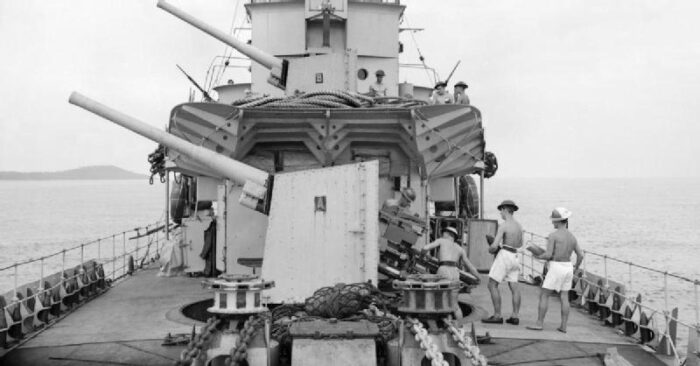
Main guns tested at 30°+ elevation on HMS Foxhound (IWM)
Produced from 1928, just as these classes were launched, the QF 4.7-inch Mk IX remained in service until 1970 and was used or exported to the RCN, RAN, Royal Hellenic Navy, Royal Netherlands Navy, Polish Navy, Royal Norwegian Navy, Turkish Navy, Dominican Navy, Argentine Navy, and Brazilian Navy with 742 Mk IX produced and 372 Mk XII of an improved design. Instead of CP Mk.VI** mountings, max elevation 30° on the E-F class new mounts were introduced, the Mark CPXVIII mounting with a ring in a deck railing base of more than 2m in diameter, 0.35 m deep. It was covered by special metallic boards lifted at higher elevation angles, ensuring the gun recoil remained its natural balance and avoiding the risk of blowing the breech into the deck. This construction however was rciticized afterwards, because of its impracticality, albeit it was used on all single gun destroyers up to G class. Later the mounting evolved into the CPXXII with a spring operated rammer.
The maximum elevation of 40° was achieved by this lowered section of the deck around the mount, but that “well” allowing extra breech course was also prone to rust, being transformed into “pool” even in moderate weather, imposing water scoops later. Thee gune fired a 50-pound (22.7 kg) shell at 2,650 ft/s (810 m/s) but the range of 16,970 yards (15,520 m) was rarely reached, or at least with any accuracy.
The main guns were controlled by the Admiralty Fire Control Clock Mk I which data came from the director and rangefinder. They were aimed solely by eye to deal with surface targets only, but in AA mode, the lack of a tachymetric (predictive) fire control and hand setting of HE time fuzes precluded success.
These Mark I clocks were fed data from a manually-operated director-control tower plus from the separate 9-foot (2.7 m) rangefinder above the bridge. They displaced this data on simple dials in each gun mount. If any, the anti-aircraft guns was aimed solely by eye and quick handling. Plus the HE shells needed a direct hit.
Specifications Mark IX**
Mass: 2.984 long tons (3,032 kg)
Length: 220.62 in (5.60 m) Barrel 212.58 in (5.40 m) L/45
Shell: Separate loading cased charge, 50 pds (22.7 kg) SAP/HE
Breech: Semi-automatic horizontal sliding-block, Hydro-pneumatic recoil
Perfs: 15 rounds per minute at 2,650 ft/s (810 m/s) to 16,970 yards (15,520 m) at 40°
QF 0.5-inch Vickers Mk III
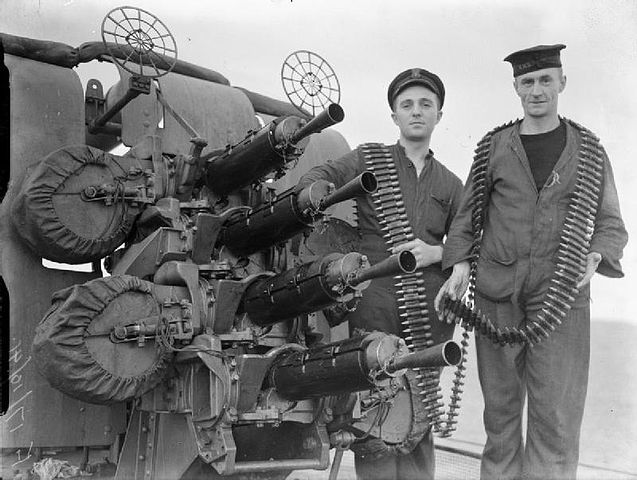
Two quadruple mounts for the QF 0.5-inch Vickers Mk III machine gun on platforms between the funnels, one mount either side. They were poorly protected against strafing fire and of limited range, only having to offer a good volume of fire at close range. Between these and the limitations of the main guns, there was a critical inter-range gap remaind uncovered, and this was paid dearly in WW2 albeit additions were made (see below).
The Mark III was a navalized land version in mountings of four tandem guns here, installed on the wings from 1931. This mount proved insufficiently powerful at short-range but from 1940-41 they were replaced on a per-mount basis by Oerlikon 20 mm cannon. This mount used a 200-round magazine per barrel wrapping the ammunition belt around the magazine drum. 700 rpm (cyclic) or 450 for longer periods. The barrels could be setup for a spread 60 ft (18 m) wid, 50 ft (15 m) high at 1,000 yd (910 m). Vickers claimed 800 rounds in 20 seconds, reload in 30 seconds.
QF 0.5-inch specs
63 pounds (29 kg), excluding 10 pounds (4.5 kg) cooling water, 52.4 in (1.33 m) long, barrel 31 in (0.79 m)
Cartridge 12.7×81mm 0.5 inches (12.7 mm) mv 2,540 feet per second (770 m/s) ceiling 9,500 feet (2,900 m range 4,265 yards (3,900 m)
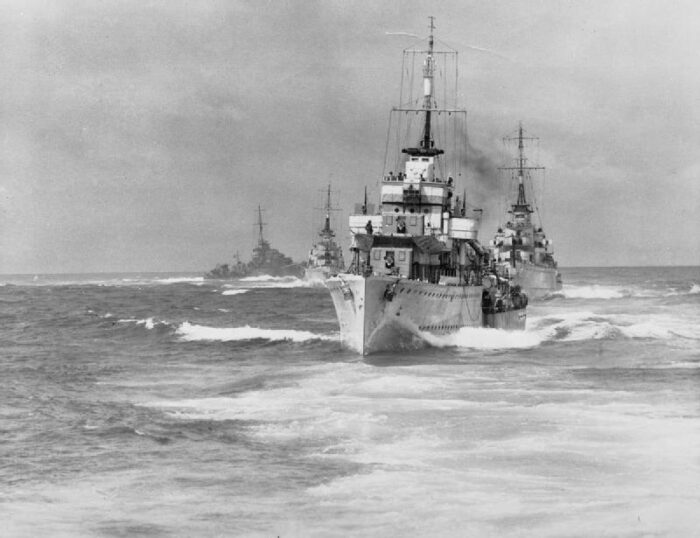
21-inches torpedo tubes
The greater change was going from triple to quadruple torpedo tubes banks on the C-Ds and this was repeated of course with the E-F. This really set apart these interwar British destroyers and imposed a new standard. They were placed on a deck top plaform, reloadable thanks to cranes. Later in wartime due to additions of AA and ASW, the aft bank, then then layer the amidship one were removed on most ships to make room and spare weight. The torpedoes were rarely used in long range mode, they were just too slow. The 40 knots mode obliged the ships to close the target to less than 5,000 yards to be of any use. So the early 1918 model was quickly superseded, but here are its stats anyway:
Specs 21 inches Mark V (1918)
Weight: 3,828 lbs. (1,736 kg)
Length: 23 ft 3 in (7.086 m)
Explosive Charge: Unknown, c600 Ibs. or 250 kgs TNT
Range and Speed settings: 5,000 yards (4,570 m)/40 knots or 13,500 yards (12,340 m)/25 knots
Power: Wet-heater
Mark VIII* (1930)
Weight: 3,452 lbs. (1,566 kg). neg. buoy. 804 lbs. (365 kg)
Length: 21 ft 7 in (6.579 m)
Explosive Charge: 805 lbs. (365 kg) Torpex (late VIII*)
Range and Speed settings: 5,000 yards (4,570 m)/45.5 kts or 7,000 yards (6,400 m)/41 ks
Power: Burner-cycle, 322 hp @ 45 knots
Mark IX** (1935)
Weight: 3,732 lbs. (1,693 kg). Neg. buoy. 732 lbs. (332 kg)
Length: 23 ft 10.5 in (7.277 m)
Explosive Charge: 805 lbs. (365 kg) Torpex
Range and Speed settings: 11,000 yards (10,050 m)/41 kts, 15,000 yards (13,700 m)/35 kts
Power: Burner-cycle, 264 hp @ 41 knots
The Mark X was introduced in late 1940 and perhaps installed, it was capable of 47 knots thanks to a wet-heater.
Hedgehog
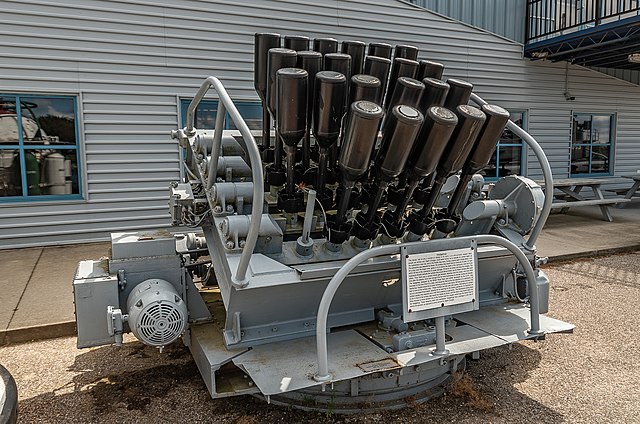
Most received in 1942 instead of their”A” position main gun forward a 24 tubes 178mm Hedgehog ASWRL. There was suspended platform woth location for 24 launcher spigots firing a 65 lb (29 kg) 7 in (178 mm) rocket carrying 30 lb (14 kg) TNT or 35 lb (16 kg) Torpex to 200–259 m (656–850 ft) and explosing by contact. They created a circle like pattern on the suspected contact, leaving little change of survival especially to a just submerged U-Boat. The charges were too small to crack open a hull but at least they could create leaks and oil slicks that could be a position giveaway.
Depth Charges
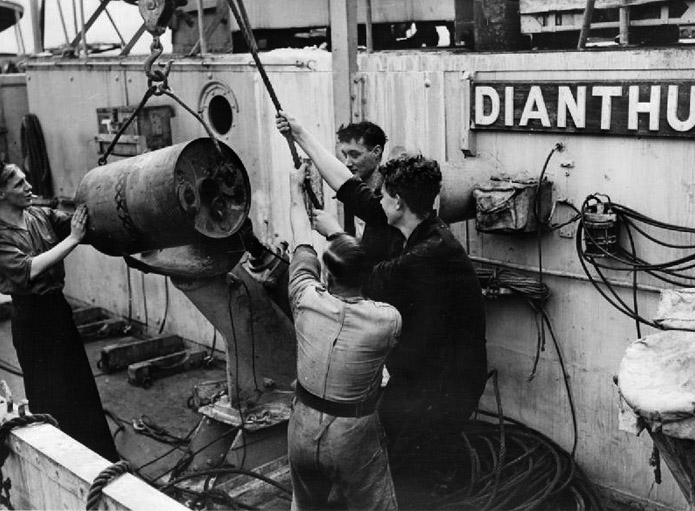
Mark VII depth charge thrower being reloaded.
The usual set comprised two Mark II Depth Charges Throwers (DCT) aft on the poop deck, facing either side, and a single Depth Charge Rack (DCR) with 20 DCs at the stern. Theere were railing to the aft superstructure for a total storage of 40 more DCs. Reload was made by hand, using winches, always a dangerous task with a rolling deck washed by waves. These depth charges were of the standard British type, meaning it was the Mark VII: In entered service in 1939, weighted 420 lbs. (191 kg) and carried a 290 lbs. (132 kg) TNT with a sink Rate or Terminal Velocity of 9.9 fps (3.0 mps) with a max setting at 300 feet (91 m) later 500 feet (182 m).
Its possible they were later upgraded to the the Mark X (1944) and the Mark X*. The X** was not introduced in service in 1945 despite its great depth (down to 1,500 feet (457 m)). Squid and Hedgehog made them obsolete. There are doubts also if the Mark VII Heavy studied from 1940 and proper to depth charge launchers were used aboard, outside experimentally. Weighting 420 lbs. (191 kg) with a 290 lbs. (130 kg) TNT charge, they had a sink rate/terminal velocity of 16.8 fps (5.1 mps) and a 300 feet (91 m) max setting, helped with a 150 lbs. (68 kg) cast-iron weight attached. The idea was to reach the U-Boat faster, and it was claimed it could split open a 0.875 inch (22 mm) hull at 20 feet (6.1 m), or force to surface at 12 m or more. The game changer was a minol charge (1942) for better results, with a 30% increase.
Mines
Not all E/F class destroyers were converted, only two of the E class at experimental level. At their stern they received a pair of sponsons housing part of a mechanical chain-conveyor system to ensure smooth delivery of the mines, stored on railed on the weather deck. To compensate for the weight of thrse Mark XIV mines, the two aft 4.7-inch guns and associated ammunition and even the two sets of torpedo tubes even the whalers and davits were removed.
Mark XIV mines:
These were a 1920s design with either a 320 lbs. (145 kg) or 500 lbs. (227 kg) charge, and Hertz horns. Switch horns were installed and they became the Mark XVII.
Upgrades
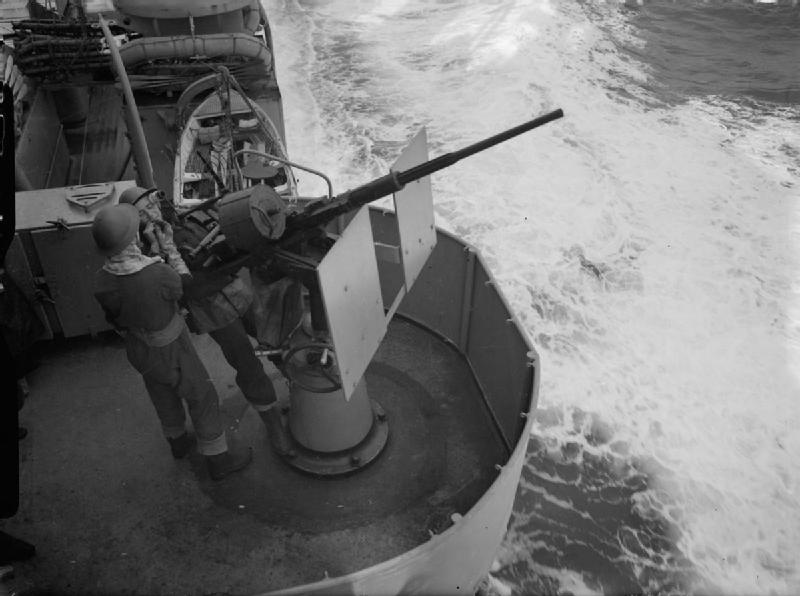
-May 1940: Aft TT bank removed, replaced by a QF 12-pounder 20-cwt AA gun. After mast and funnel cut down to improved its field of fire.
-1941: Depth charge stowage increased to 38.
-1942: 4-8 QF 20 mm Oerlikon cannons installed on surviving ships instead of the Vickers .50 HMGs between funnels. Plus a pair on bridge wings and another abreast the searchlight platform.
-1943: All surviving ships (except Fury) saw their ‘Y’ gun on quarterdeck removed and extra depth charge stowage, + two more DCTs. 12-pdr removed for a Huff-Duff radio direction finder and extra DCs.
-1944: All survivors except HMS Echo: ‘A’ or ‘B’ gun replaced by Hedgehog ASWRL. Director-control tower/rangefinder removed in exchange for a Type 271 target-indication radar.
HMS Fame: ‘A’ gun reinstalled. Type 286 short-range surface-search radar added, only capable to scan directly forward.
HMS Express: ‘B’ gun replaced by 2×2 QF 6-pounder Hotchkiss mount, split Hedgehog, 12-pdr gun, no TTs.
Sensors
Sonars
Type 119 ASDIC: 1930 hydrophone type.
Type 124: From 1937, improved Type 121, range 2500 yards, 1st with chemical range recorder.
Type 127: From 1940, mostly installed on British Flower class sloops, first with a bearing plotter.
Type 144: From 1943, range 2500 yards (2300 meters) to 3000 yards (2700 meters), integrated into the fire control and coupled with Hedgehog. 1st with bearing recorder, automatic scanning, turning 5 degrees after each ping, often coupled with the Type 147 “Sword” depth finding sonar with a beam steerable vertically. Also coupled with the Q attachment reducing the under hull blind spot. 60° deep vertical beam, trained with the main Type 144 transducer.
When purchased by Canada, the four C-class destroyers were refitted on Canadian specifications and saw the Type 124 ASDIC installed, and steam heating probably fitted.
Radars
Type 286: Naval air search radar, first destroyer set, very crude, not rotating. Full data 286P: rotating antenna, better bearing accuracy of 3-5 degrees.
This was a metric target indication set, based upon RAF ASV Mark II set. The Type 286M had fixed antennas (central Tx and sides Rx) to indicate contact bearing. Fixed antenna so the entire ship needed to be aimed in the right scaning angle. The Type 286PQ had a steerable combined Tx/Rx antenna from the Type 291 set at least.
Type 271: Corvette small surface search radar using a standard microwave-frequency system with improved resolution to spot surfaced U-boat 3 miles (4.8 km) around, or a periscope at 900 yards (820 m). Full data
Type 285: Anti-aircraft gunnery radar available from late 1940, Frq 600 MHz, power 25 kw, range 18,000 yd (16,000 m), ceiling 15,000 ft (4,600 m) accuracy 150 yd (140 m).
piccccccccccc
HD Profile Awaited
⚙ specifications E/F/G class |
|
| Displacement | 1,405 long tons (1,428 t) standard, 1,940 long tons (1,970 t) deep load |
| Dimensions | 329 x 33 ft 3 in x 12 ft 6 in (100.3 x 10.13 x 3.81 m) |
| Propulsion | 2 shafts geared steam turbines, 3× Admiralty 3-drum boilers 36,000 shp (27,000 kW) |
| Speed | 35.5 knots (65.7 km/h; 40.9 mph) |
| Range | 6,350 nmi (11,760 km; 7,310 mi) at 15 knots (28 km/h; 17 mph) |
| Armament | 4× QF 4.7-in Mk IX, 2×4 0.5-in Mk III AA, 2×4 21-in TTs, DCT/DCR |
| Sensors | Hydrophones, ASDIC, see notes |
| Crew | 145 |
E/F Flotilla Leaders
After the B, C, D classes the admiralty decided to copme back to the A class of the 1927 programme with an enlarged, purpose built flotilla leader. The basic design was just lengthened to incorporate an extra section amidship, and mount an additional QF 4.7-inch gun between funnels wheras the AA mounts were relocated aft. The lengthened design also had a modified three boiler room layout for better watertight safety. The also lacked either minesweeping or minelaying capabilities. Overall displacement rose between 1,475 and 1,495 long tons (1,499–1,519 t) standard up to 2,010–2,050 long tons (2,040–2,080 t) deeply loaded. But most importantly, the overall length grew to a few extra feet at 343 feet (104.5 m), while keeping the same beam and draught.
The second imprtant change was around the bridge and in the nex ewtra section where new accomodations were created for the extra staff, making for a total of 175 personnel instead of 145. Captain (D) had now a private cabin close to the bridge. The turbines were also 2,000 shp (1,500 kW) more powerful to compensate for the extra lenght and displacement, resulting in a 0.5 knots (0.93 km/h; 0.58 mph) so back to 36 knots as the previous C-D. But the general scheme of the propulsion was the same, with two turbines and three boilers.
Exmouth was lost before any modiifcations were amde, on her sister Faulknor, which survived the war. She received an extra 4-inch (102 mm) AA gun to repace her “B” torpedo tubes, later reinstalled and the 4-inch gun was swapped for the ‘X’ (deck position) 4.7-inch gun aft. Two 20 mm Oerlikons were installed on the bridge’s wings, and a quad QF two-pounder “pom-pom” replace the extra ‘Q’ gun between funnels. The rangefinder was landed to spare weight, replaced by a high-angle director and Type 285 gunnery radar atop.
 E class leader HMS Exmouth (1934)
E class leader HMS Exmouth (1934)
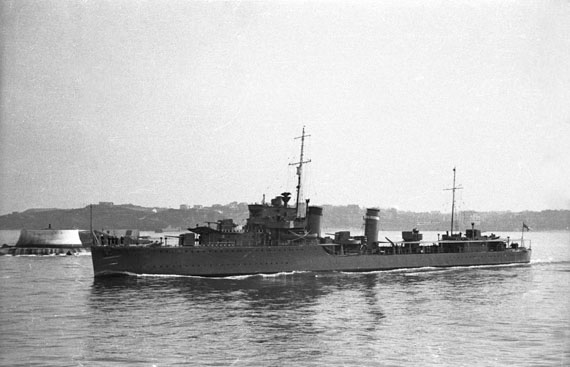
Exmouth off Bilbao in 1936
Exmouth was originally laid down at HM Dockyard in Portsmouth on 15 May 1933. She was launched on 7 February 1934 and completed on 9 November 1934. She was assigned to the Home Fleet as leader of the 5th Destroyer Flotilla. But almost immediately after, reassigned to the Mediterranean Fleet, force H, in 1935–36, to lead her unit during the Abyssinia Crisis from August 1935 to March 1936. She was however refitted in Alexandria from 4 October 1935 to 5 January 1936.
She also took part in the Spanish Civil War in 1936–1939 and spent more time that any other E class DD in Spanish waters, managing to enforce the arms blockade imposed by Britain and France on the Republicans and Nationalists (edicts of the Non-Intervention Committee). She was also refitted at Portsmouth between 17 November 1936 and 19 January 1937 and 21 November 1938 and 16 January 1939.
She was assigned to training duties/local flotilla at Portsmouth from 28 April 1939 until 2 August, replaced into full commission as leader of the 12th Destroyer Flotilla and reassigned to convoy escort and ASW patrols under the Western Approaches Command like most of the E class. Leading HMS Eclipse and Echo she escorted the battlecruiser HMS Hood south of Iceland by late November in earch of German Deutschland class commerce raiders. In December she went on in patrols and convoys escort until transferred to Rosyth in January 1940. She was tasked of the same this time in the North Sea, and was escorting the merchant Cyprian Prince on 21 January 1940. U-22 (Karl-Heinrich Jenisch) spotted her and torpedoed her at 05:35 and she sank with all hands. Cyprian Prince did not stopped to pick up survivorts as the U-Boat was likely to sink her also and sailed out to the nearest port at full speed. Eighteen bodies were later discovered washed ashore by a schoolboy and were later buried with military honours at Wick.
⚙ HMS exmouth specifications |
|
| Displacement | 1,495 long tons (1,519 t) standard 2,050 long tons (2,080 t) deep load |
| Dimensions | 343 ft x 33 ft 9 in (104.5 x 10.29 m) |
| Propulsion | 2 shafts Parsons GS turbines, 3× Admiralty 3-drum boilers, 38,000 shp. |
| Speed | 36 kn (67 km/h; 41 mph) |
| Range | 470 long tons fuel oil: 6,350 nm (11,760 km; 7,310 mi) at 15 knots |
| Armament | 5x 4.7 in guns and same as E class |
| Sensors | ASDIC, See notes |
| Crew | 175 |
 HMS Faulknor (1934)
HMS Faulknor (1934)
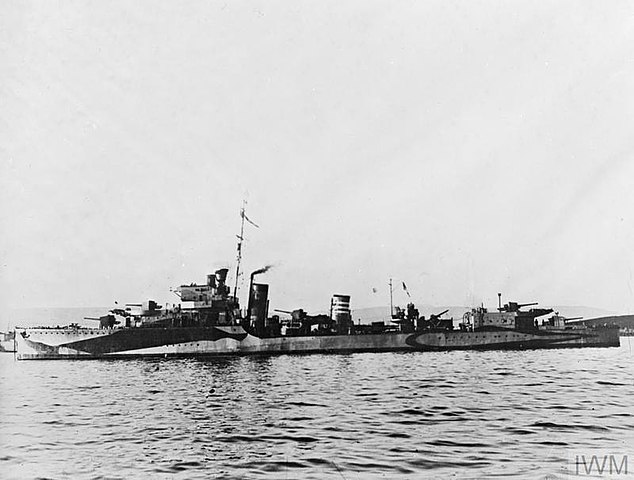
Faulknor was laid down at Yarrow in Scotstoun on 31 July 1933. She was launched 12 June 1934, completed 24 May 1935. She reached a speed of 36.53 knots (67.65 km/h; 42.04 mph) in sea trials and had a metacentric height of 2.89 feet (0.88 m) when deeply loaded.
HMS Faulknor was ordered on 17 March 1933 from Yarrow (1932 Programme) but sub-contracted to Vickers Armstrongs, laid down at Walker, Newcastle upon Tyne on 31 July. She was launched on 12 June 1934, christened by the wife of Rear-Admiral Reginald Henderson, 3rd Sea Lord, Controller of the Navy. She was the 3rd ship of this name in the RN. Faulknor (from a family of distinguished Royal Navy officers) was completed on 24 May 1935 at a cost of £271,886 excluding armament, ammunition and communications sets. Captain Marshall Clarke took command of her as well as of the 6th Destroyer Flotilla, Home Fleet. After intensive training in May–July, she made a shakedown and trials cruiser between 29 July to 21 September, and was fixed back in port, then returned at the head of her flotilla.
She was sent to the Mediterranean Fleet to patrol during the Second Italo-Abyssinian War, under Captain Victor Hilary Danckwerts. She was back on 20 July to Portsmouth for a refit until 3 October then detached to the Mediterranean as the Spanish Civil war flared up, in order to enforce the arms embargo on belligerents.
She was deployed off Spanish ports from the Bay of Biscay and spent three months on the Spanish norther and western coasts, before returning in UK; While doing so she collided underway by night with the freighter SS Clan MacFadyen off Ushant. This sent her for repairs at Portsmouth until 28 December. Next she was tasked of cooperation with the French Navy in the Mediterranean for joinnt training operations for a poissible future war against the Regi Marina, in early 1938 and back home, when C. S. Daniel took command in April 1938. Her unit became the 8th Destroyer Flotilla from April 1939.
Escort Missions
In September 1939, she served with this unit of the Home Fleet from Scapa Flow and sortied for ASW patrols at first with the carrier group created around HMS Ark Royal. On 14 September she was unabled to prevent her torpedoing by U-39. Later Foxhound and Firedrake tracked down and managed to sink U-39 north-west of Ireland, as the latter surfaced, they were able to rescue most of her crew. Next as U-Boat activity was signalled in the Hebrides, the 6th and 8th squadrons were ordered there on 19 September. Faulknor on the 20th rescued 20 men from U-27, sank after an epic chase and sinking. Again, the doomed U-boat surfaced to surrender, crippled, saving the crew.
While underway in heavy seas by October, escorting capital ships of the Home Fleet she was badly damaged by high waves. She was in repairs at Scotstoun from 15 to 28 October. On 4 December, she escorted HMS Nelson when she struck a magnetic mine while entering Loch Ewe. Faulknor assisted her. By February 1940, she escorted Convoy TC 3 with troops from Canada to Britain. She also rescued 10 survivors from SS Orania on 11 February. Captain Antony de Salis took command on the 19th.
Norwegian Campaign
She took part next in the Norwegian Campaign by April–June. She was part of the screen for Home Fleet battleship sweeping these seas trying to find the Kriegsmarine, which was signalled out at sea. After the Second Battle of Narvik on 12 April, De Salis was appointed Senior Destroyer Officer for Narvik, having full authority over all destroyers in the area, sending them in search of German destroyers in the Ofotfjord, also to evaluate German defences and patrolling at the entrances to repel any U-Boat incursion. HMS Faulknor even sent a landing party on 16 April to inspect the wreck of Z19 Hermann Künne. The party tried to retrieve useful documentatio, and examine her general design and assets. They found nothing but one member on deck was short dead by a German sniper. On the 17th, Faulknor and Zulu shelled the wreck, leaving her alight to prevent any future retrieval. Soon both destroyers were assaulted by Stukas, but to little effect between the weather and nature of the Fjord which complicated their actions.
On 25 April, she covered the landings of the 2nd Battalion to Bogen and Lenvik and was called for naval gunfire support on Narvik. On 4 May she rescued 52 survivors from the Polish Grom, sunk by Stukas. She recovered 60 bodies as well to be later buried with military honors. On the 5th, she ran aground while taking position to shell Rombaksfjord defence. No serious damage, she was able to free herself. While back she escorted a convoy of empty troopships and entered Scapa Flow on 9 May, then headed for Grimsby for repairs, completed on 12 June.
Mediterranean Campaign
A week later, she escorted Hood and Ark Royal alongside Fearless, Foxhound and Escapade, from Scapa to Gibraltar as a core of the new Force H. In early July, she screened them for the Attack on Mers-el-Kébir (Operation Catapult on the Vichy French Navy in Algeria). Next she escorted Force H for Operation MA 5, a planned carrier attack on Italian airfields in Sardinia. But it was cancelled after HMS Escort was torpedoed by the sub Guglielmo Marconi on 11 July. Surprise wa sindeed lost. The destroyer survived for almost a day with heroci efforts to capsize the following morning after Forester and Faulknor took off survivors.
Next she was part of Operation Hurry, and early aircraft reinforcement mission to Malta and airstrike on Cagliari on 2 August. On 13 September she took part in a troop convoy bound for Dakar (Vichy French Atlantic stronghold). Ten days later they arrived and attacked Dakar, but were driven off by the battleship Richelieu and coastal batteries. By early October she escorted a troop convoy from Freetown to French Cameroon, again on behalf of the Free French trying to rally west africa. Back to Gibraltar she scorted Argus and Ark Royal for Operation Coat and Operation White to Malta in November. On 21 November she met HMS Despatch and Forester and they intercepted the Vichy French blockade runner MV Charles Plumier, escorted for internment to Gibraltar. Next she escorted Force F to Malta in Operation Collar and was present in the Battle of Cape Spartivento on 27 November. After another convoy to Malta she assisted Convoy WS 5A after, attacked in the Atlantic by the German heavy cruiser Admiral Hipper, from Gibraltar.
In early January, she shortied with Force H in Operation Excess before being detached to escort Convoy WS 5B bound for Egypt via Good Hope and then back to Freetown, being assigned to Freetown Escort Force. Faulknor rescued 4 from the oil tanker SS British Premier on 3 February, sunk 41 days earlier. They escorted next Convoy SL 67 and HMS Malaya back to Gibraltar by late February when attacked by two U-boats on 8 March (5 losses) while later German battleships Gneisenau and Scharnhorst were spotted, albeit but Admiral Günther Lütjens declined to fight HMS Malaya. Faulknor and Forester were in Gibraltar on 16 March and was in refit until early April.
On 2–4 April, she escorted Ark Royal for another run to Malta, and again 3 weeks later. In early May she screen HMS Queen Elizabeth, and the light cruisers HMS Naiad, Fiji and Gloucester making their way into Mediterranean Fleet for Operation Tiger, a supply convoy with tanks to the Middle East. Later she had her Two-Speed Destroyer Sweep (TSDS) minesweeping gear rigged to operate sweeps en route to Malta. Despite of thise there was one merchant lost to mines another damaged. Next, she was in Operation Splice with Ark Royal and Furious to Malta.
KMS Bismarck, freshly commissioned and trained soon sortied in the North Atlantic. She was recalled as the Convoy WS 8B was threatened by the latter on 24 May, after the disastrous Battle of the Denmark Strait a day preior (Hood sunk, PoW badly damaged) and with her sister she was directed to seach for Bismarck and Prinz Eugen the following day.
Heavy seas caused high fuel consumption so she had to turn back to Gibraltar to refuel, trying to return and catch Force H on 29 May, but Bismarck was sunk in between. In early June she was again on Malta runs, Operations Rocket and Operation Tracer). On 16 June she was sent to hunt for German blockade runners from Bordeaux with Fearless, Foresight, Forester and Foxhound. They tracked and sank U-138 on 18 June. Next they were sent to intercept a German supply ship underway for the French coast and undeed spotted MV Alstertor, but she was scuttled by her when spotted. They rescued 78 British POWs made by German raiders and the crew. In late June she escorted Ark Royal and Furious for Operation Railway to Malta.
In the next one, Operation Substance she assisted Fearless on 23 July, crippled by SM.79 Sparviero torpedo-bombers. Her state was critical and she could not be towed, so she was scuttled instead. Next Faulknor screened capital ships of Force H in Operation Style. Whike back her turbines broke down but she reached Gibraltar for repairs. An inspection showed her starboard turbine blades were fractured. Spare parts lacking she was sent home, underway escorted convoy HG 70 reduced to a single turbine at 18 knots until reaching Londonderry on 16 August. She remained in Southampton until 9 November.
Arctic and Atlantic convoys

HMS Faulknor was reassigned to the Home Fleet, Scapa Flow, escorting HMS Duke of York with PM Winston Churchill aboard for the Atlantic Conference in mid-December. Heavy weather encountered underway forced Faulknor and Foresight to reach the Azores until returning to Scapa Flow.
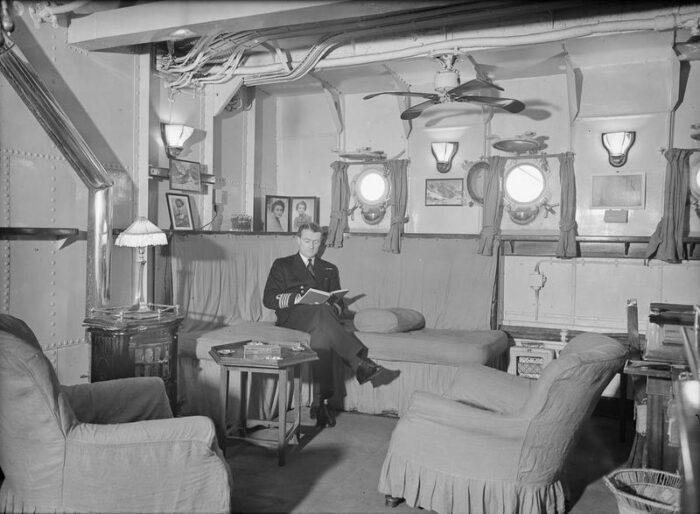
On 27 January 1942, Captain Alan Scott-Moncrieff took command and she started service with the arctic convoys to Russia. Scott-Moncrieff was tasked of comminding the whole close escort for Convoy PQ 9/10 and QP 7 back in February, as well as the covering force, Convoy PQ 12 in March, later the destroyer assisted the damaged HMS Sheffield by a mine, escorted her to Seidisfjord in Iceland. Next she conducted a sweep off the Norwegian coast while trying to locate KMS Tirpitz, and back at Scapa on 14 March. Next she escorted Convoy PQ 13 and QP 9. On 1 April she escorted ten Norwegian merchants en route for Britain from Sweden, via the Skagerrak. The Germans expected this and managed to sink six of these. This was so bade the survivors went back to Sweden. Faulknor saved men on arrival from SS Rigmor, under Luftwaffe attacks. Nect she escorted Convoy PQ 14 (11–18 April) PQ 15 (22 April–5 May), PQ 16 (23–30 May, PQ 17 (29 June–8 July) taking damage in heavy weather before a refit at Hull until 27 August in which she received alterations, like the 285 fire control radar and Type 286PQ warning radar and armament mods. Next she escorted Convoy PQ 18 in September (co-claimed U-589 on the 12th, south of Spitsbergen) and QP 15 (October) JW 51A (December), JW 52 (January 1943) JW 53 (February) RA 53 (March) but was detached in April for North Atlantic escort at the head of the 4th Escort Group, and convoys HX 234, SC 127, ONS 6, ONS 182, and HX 239.
Mediterranean and Aegean

Faulknor leader a group of four destroyers, shot from her bridge on 3 Feb. 1943
In June 1943, she returned to her old unit as leader, the 8th Destroyer Flotilla, leaving the icy cold waters of the north for the Mediterranean, eastern fleet at Alexandria on 5 July. Her first mission since the Malta runs here was the invasion of Sicily, Operation Husky, patrolling the Ionian Sea for 2 aircraft carriers, 3 battleships, 4 cruisers, 17 destroyers in August. Next she was present during the invasion of Italy, Operation Baytown and Salerno landings, Operation Avalanche. She escorted the surrendered Regia Marina’s units to Alexandria via Malta. Next she took part in the Dodecanese Campaign, carried and supported troops to Leros, patrolling, sinking axis cargo ships and landing craft and shelled positions, but the operation was abandoned in November 1943. The next months she escorted landing ships on the west coast of Italy, notably HMS Royal Ulsterman and Princess Beatrix (No. 9 Commando) for Operation Partridge) with shore bombardment and by January 1944, the landings at Anzio, Operation Shingle, again with naval gunfire and AA defence. Later she acted as escort for reinforcements into March 1944.
Normandy Landings and Channel Operations
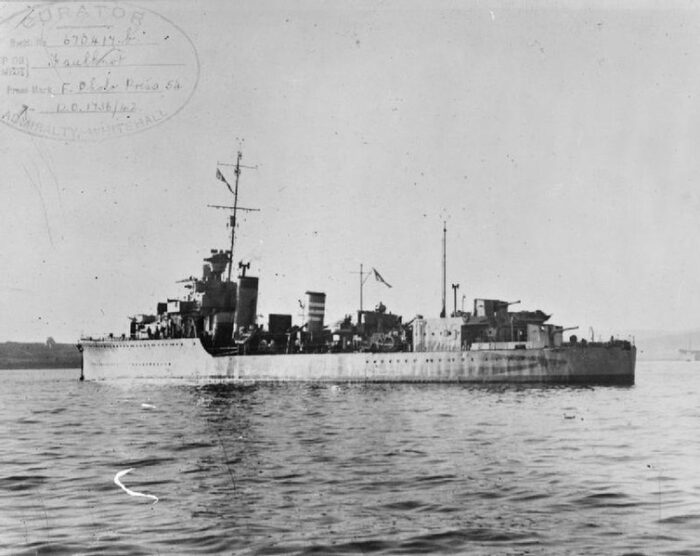
In April 1944 she was back to Scapa Flow, prepared to support the Normandy landings and Operation Neptune, the British Name for ther naval side of Overlord. She took the head of Force J on the Eastern Task Force, shelling German positions close to La Riviere with 9 others DDs. On 27 April he had training in the Solent and joined Normandy area on 4 June, learning the operations was postponed due to weather and the followind day she joined Convoy J1 (9th Minesweeping Flotilla and 1st Division among others). On the 6 June she added her naval gunfire off Juno Beach until emptying her ammunition holds, resupplied at Portsmouth later. On 7 June she carried back to Normandy no less than Sir Bernard Montgomery, Allied Land Forces Commander up to the beachhead, to set up his Tactical HQ. The later insisted she approach the beach as close as possible, and she ran aground on a sandbank, waited for the next high tide to free herself with a tug
Next she was busy patrolling and carrying VIPs. On the 24th, she carried another one, 1st Sea Lord, Admiral of the Fleet Andrew Cunningham, and Second Sea Lord Admiral Algernon Willis as well as the Naval Secretary Admiral Cecil Harcourt, and Lord Privy Seal Lord Beaverbrook, from Portsmouth to the beaches and back.
Faulknor in July was sent to Grimsby for repairs of her sonar dome. In September she patrolled the Channel. In October she joined the 14th Escort Group in Milford Haven, Irish Sea, and South-West Approaches. In December she retook the head of the 8th Destroyer Flotilla at Plymouth, defence of Channel convoys. On 8 May 1945 she accepted the surrender of the German garrison at Saint Peter Port in Guernsey. On 17 May she escorted six German minesweepers in internement to the UK. On 6 June she escorted HMS Jamaica with King George VI on board to visit the freshly liberated Channel Islands.
Given her general state, worn out, the proud destroyer was reduced to Reserve at Plymouth, then Dartmouth, decommissioned, place on the Disposal List in December 1945, sold for BU on 21 January 1946, at Milford Haven from April 1946.
⚙ HMS Duncan specifications |
|
| Displacement | 1,475 long tons (1,499 t), 2,010 long tons (2,040 t) deep load. |
| Dimensions | 343 feet (104.5 m) long overall, beam/draft same as F class. |
| Propulsion | 2 shafts Parsons GS turbines, 3 × Admiralty 3-drum boilers, 38,000 shp. |
| Speed | 36 knots (67 km/h; 41 mph) |
| Range | 490t oil, 6,500 nmi (12,000 km; 7,500 mi) at 15 knots (28 km/h; 17 mph) |
| Armament | 5x main guns, 2×4 Vickers 0.5 in AA 20 depth charges, 1 rail and 2 throwers* |
| Sensors | ASDIC, See notes |
| Crew | 175 |
Armament Changes
Outside her five 4.7-inch Mark IX guns in single mounts (‘A’, ‘B’, ‘Q’, ‘X’, and ‘Y’) from front to rear she had like the F class two quadruple anti-aircraft Mark I mounts on the bridge wings instead of the inter-funnel banstand (Q gun there). Unlike the F class she had the quintuple, not quadruple torpedo tube mounts, for 21-inch (533 mm) torpedoes with reloads. There was a similar otherwise single depth charge rack aft, and two throwers with a total of 20 depth charges and in early, 1940, 35. Already whil in repairs by May–June 1940, she lost her aft TT ban for a QF three-inch (76 mm) 20 cwt AA gun.
She also inb mid-1941 received many modifications for Arctic weather and received 38 depht charges. From mid-1942 her ‘X’ main gun was removed to received the relocated 3-inch AA gun to reinstall the aft torpedo tubes bank in cqse of a bad encounter are German destroyers sorties were not rare. The quad Vickers AA were landed for shielded single 20-millimetre (0.8 in) Oerlikon AA guns, with a new pair installed on the aft superstructure and she received a new high-angle gunnery director and analog Fuze Keeping Clock (Mark I mechanical computer) topped by a Type 285 gunnery radar and a type 286PQ surface-search radar on top of her foremast
March–April 1943 saw the latter’s replacement by a Type 291 radar whereas her 3-inch gun was replaced by a quadruple Pompom 2-pdr Mk II AA. On the bridgd’s wings, the single Oerlikon mounts were replaced by twin ones making for a total of six Oerlikons, four Pompom. Now extra ASW modifications were made. She ended her career in this state.
E class Destroyers
 HMS Echo (1934)
HMS Echo (1934)
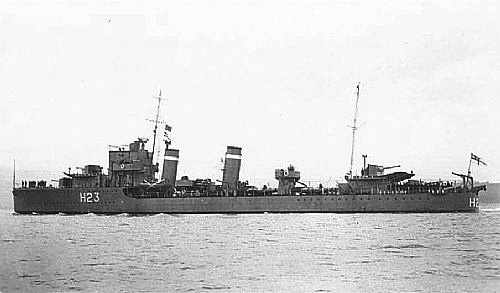
Echo was laid down at William Denny & Brothers, Dumbarton on 20 March 1933, launched on 16 February 1934 and completed on 22 October 1934.
She took part in the film “Q Planes” up in March 1939. In January 1940 she was assigned to the 12th Flotilla at Scapa Flow, for minelayer escort and patrols. In May she took part in the campaing of Norway, covering notably evacuations and shore bombardments. In August she escorted the 1st Minelaying Squadron in several operations. On the 28th she took part in Operation Menace to Dakar. She escorted the damaged battleship HMS Barham to Freetown for repairs, and remained there for local convoy, back home by late October 1940. Next she remained in home waters operations, no details.
On 21 May 1941, with a squadron of dive, she escorted Hood and Prince of Wales on their way to Denmark Strait trying to intercept Prinz Eugen and Bismarck. On 25 May, she escorted the damaged Prince of Wales to Iceland for provisional repairs. By late July 1941 she became part of a screen fpr Force P center around Furious and Victorious and the cruisers Devonshire and Suffolk for the raid on Kirkenes and Petsamo. By mid-August she was refitted at Harland and Wolff back in flotilla on 4 November.
From 8 December with HMS Escapade she scorted HMS Edinburgh and Russian Convoy PQ 6 to Kola Inlet. She was later detached to escort a Russian merchant ship to Murmansk, attacked underway by Ju 88 bombers, saved by Hurrican and arrival of Edinburgh, then escorted back QP 4 to Scapa Flow on 10 January 1942.
Next she was deployed on escorts between UK and Iceland and from mid-June she was under refit in the Humber, back to Scapa on 22 August and the 8th Destroyer Flotilla. On 2 September she escorted Russian Convoy PQ 18 and QP 15 in November, JW 51A in December, JW 52 in January 1943.
After a new refit at a Humber shipyard she was back to the 8th D.F. in June, sent to Gibraltar on 17 June and by July to Alexandria and Operation Husky in Sicily. On 13 July with HMS Ilex, she sank the RM submarine Nereide off Messina. On 16 September she supported operations in the Aegean and with HMS Intrepid destroyed the German Unterseebootsjager UJ-2104, off Stampalia.
In 1944, she was transferred to Greece, renamed Navarinon. In June 1953 the destroyer attend Queen Elizabeth II’s Coronation Review at Spithead and she was decommissioned in 1956 and scrapped.
 HMS Eclipse (1934)
HMS Eclipse (1934)
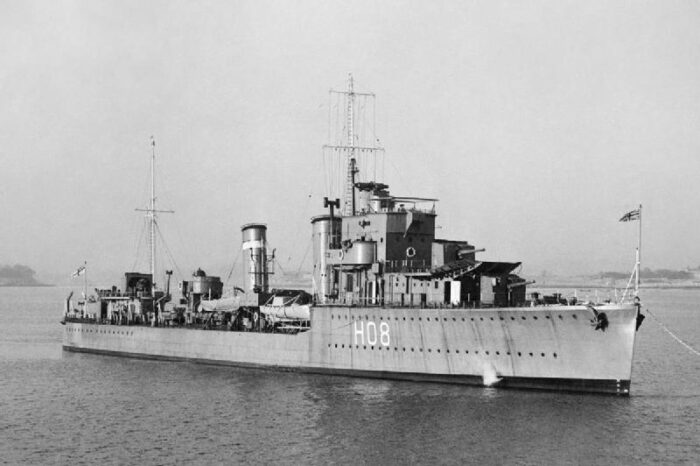
HMS Eclipse was laid down at William Denny on 22 March 1933, launched on 12 April 1934 and complted on 29 November 1934. She was assigned to the 5th Destroyer Flotilla, Home Fleet with, British Isles for months, and left Plymouth on 31 August 1935 for the Mediterranean Fleet (Abyssinia Crisis), in Haifa from 8 September to 3 October, Alexandria (4 October to 5 January 1936) and back in March, refitted from until 30 April at Devonport. In autumn 1940 she took part in Operation Menace the ill-fated operation against Dakar. Next after a refit at Freetown she joined the 3rd Destroyer Flotilla and was based at Gibraltar. In her crew was the Cornish poet Charles Causley. In April 1941 she was refitted at Devonport and from 25 June she joined the 1st Minelaying Squadron for the Northern Barrage, replacing HMS Brighton (collision with Kenya). She joined Force P for the raid on Kirkenes and Petsamo.
Next in August she was committed to Operation Gauntlet, screening for the cruisers Aurora and Nigeria, troopship Empress of Canada oiler Oligarch to Spitsbergen, covering Canadian troops. In July she was with the 8th DF. Next she took part in Operation Gearbox with Amazon, Bulldog, Echo and Venomous, screen for HMS Cumberland and Sheffield to establish a refuelling facility at Lowe Sound in Spitsbergen and re-supply the garrison. After a refit at the Humber she was at Scapa on 20 November and new she escorted Convoy HX 231, attacked by 11 U-boats, rescued 16 survivors from Blitar on 9 April, landed at Reykjavík.
She was transferred to the Mediterranean. On 23 September she spotted a convoy, with the Italian freighter Gaetano Donizetti (3,428 tons) under German hands, with 1600+ POWs, underway on 22 September 1943 off Rhodes, escorted by TA10 (former French TB La Pomone/Ital. FR 42), attacked by Eclipse (Commander E. Mack), sinking the cargo ad badly damaging TA10, later towed back to Rhodes but scuttled. But on 24 October Eclipse hit a mine east off Kalymnos and sank in 5 minutes, including with 119 our of 134 soldiers carried (A Company, 4th Battalion, Buffs).
 HMS Electra (1934)
HMS Electra (1934)
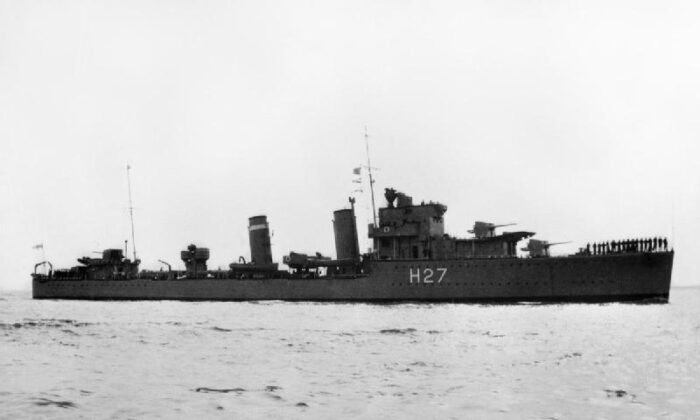
Electra was laid down at Hawthorn Leslie & Company, Hebburn on 15 March 1933, launched on 15 February 1934 and completed on 13 September 1934. Electra was easily one of the most famous of the E class. Her career started with the 5th Destroyer Flotilla Home Fleet. From September 1935 she was in the Med for the Abyssinian crisis and back to the Home Fleet in March 36. She took part in non-Intervention Patrols in the Spanish Civil War and was refitted at Sheerness in 1938 and placed in reserve until 2 August 1939 and with her reservist company on 26 August 1939 she was at a naval review for King George VI.
As the war broke out she was in the 12th Destroyer Flotilla. 3 September 1939 saw her picking up survivors from the liner Athenia, sunk by U-30 and took charge in the ooperations, saving 980 passengers (112 lost). She escorted a convoy off Pentland Firth in heavy seas when she had an ammunition locker on the forecastle broking loose, sliding around the deck, until secured by volunteers. Under the Western Approaches command she ptarolled until April 1940 escorting ON 14, HN 14, ON 16, HN 16, ON 18, HN 18, ON 20, and HN 20.
She later escorted two convoys to Norway and back, the first with HMS Southampton, but attacked by German bombers in the second. While an in 3rd mission to land officers she shot down an attacking German bomber with her 4.7-inch (120 mm) gun, the first time it happened and proving the limited elevation and visual could aiming in the right circumstances. She was equipped with her TSDS minesweeping gear and screened-sweeped in front of HMS Warspite into Ofotfjord adn then Narvik, until Admiral Sir William Whitworth, impatient, decided to risk the mines and left Electra. On 24 April she HMS Vindictive from Bogen to Narvik, landing and covering the Irish Guards and back home on 8 May.
On 13 June 1940, she escorted HMS Ark Royal for the raid on Trondheim however in heavy miscommunication caused HMS Antelope cutting across the bows of Electra and she hit her aft of the engine room while her bow was mushed. She was towed back to Scotland after 4 days, repaired at Ailsa, Troon until late August and also refitted, modernized. She joined the 3rd DF Scapa Flow and escorted the 1st Minelaying Squadron to the NW approaches, Irish Sea, then escorted the battlecruiser Repulse searching for German surface raiders signalled attacking HX 84, sinking Jervis Bay and 5 ships, the destroyer looking for survivors.
In December she was back in the North Atlantic with Hood, Edinburgh, and fellow DDs Escapade, Echo, and Cossack after a false report. She changed commander for Lt. Cecil Wakeford May until she was sunk. She spent time in escort in the British Isles and Bristol Channel and by January 1941 she escorted Hood for minelaying Operations SN6 and SN65 (Northern Barrage)and from 23 January, Operation Rubble, escape of Norwegian merchant ships from Gothenburg in Sweden. In February, she escorted WS6A in the Clyde and then Prince of Wales in her trials. Next she accompanied convoy HX 122 from Halifax (20 April) to Liverpool on 8 May and recused the crew of a Coastal Command Avro Anson which crashed. In March with Inglefield she escorted HMS Queen Elizabeth looking for Scharnhorst and Gneisenau. By mid-May she escorted the 1st Minelaying Squadron at the Northern Barrage.
On 21/22 May 1941 with Achates, Antelope, Anthony, Echo, and Icarus she escorted Hood and Prince of Wales to bar the northern approaches to Bismarck, but weather was awful and on 23 May, they were signalled by Admiral Lancelot Holland (Hood) to leave if they could not keep up, which they did, after being spread out at 15 nm (28 km) intervals, search to the north.
When the battle started the destroyers were 60 nm (111 km) away, Electra, informed, raced and arrived 2 hours after Hood went down but only rescued 3 survivors and continued searching, joined by two others DDs before leaving the area. After refuelling in Iceland she raced to escort the damaged Prince of Wales to Rosyth. She was back to escort missions and was later refitted at Green & Silley Weir, Royal Docks, London, then back to convoys with a new camouflage paint scheme to escort another convoy in “Bomb Alley”. Next she was appointed Senior Escort for the first Arctic convoys to Russia (Operation Dervish) with Active and Impulsive and three Algerine-class minesweepers, three trawlers. She was back with QP1 and thecruisers HMS London and HMS Shropshire plus 11 merchantmen from 26 September to 10 October.
On 20 October 1941 she escorted HMS Prince of Wales to the Far East under VADM Sir Tom Phillips intended for Singapore, loaded with supplies and ammunition and via Greenock, really started on 25 October (Force G). Upon arrival they were renamed Force Z and with her was HMS Hesperus and later HMS Legion detached from a Gibraltar convoy, with Express, via the Azores. Electra and Express returned the following day and on 2 November they were in Freetown, refuelled at Cape Town on 16 November (Simonstown Naval Base until 18 November) and reached Colombo on 28 November via Mauritius and Addu Atoll to refuel.
On 29 Novembe she sailed with Encounter and Jupiter detached from Gbraltar via Alexandria and Suez, to Colombo. They were joined by Repulse from Trincomalee and headed for Singapore, arriving on 2 December. After a few days Repulse was scheduled to go to Australia but was recalled.
On 8 December, Singapore was attacked by IJA aviation but anti-aircraft fire repelled them, with no damage. They were soon reported the attack on Pearl Harbor and invasion of Siam prompting them to depart at 17:30 on 8 December. Prince of Wales and Repulse were escorted by Electra, Express, Vampire, and Tenedos but the latter returned at 18:30 on 9 December short of fuel. Electra sighted and reported a flare to the north, dropped by a Japanese aircraft by mistake and causing the Brits to veer and finding themselves just 5 miles (8 km) apart of an IJN fleet.
Thus Admiral Philips cancelled the operation, ordered them back to Singapore but they were spotted and reported by the Japanese submarine I-58 and as a raid was signalled on 10 December at Kuantan, Express was sent to investigate. Later Prince of Wales and Repulse were sunk off Kuantan by 85 Japanese aircraft and Electra and Vampire sailed there to rescue survivors but not Admiral Tom Phillips. In total they saved 1,000 survivors of Repulse (Electra alone 571). For the next three weeks Electra escorted convoys from Singapore, often with HMAS Hobart. She escorted BM-11, in late January but also BM-9B (22 December 1941) BM-10 (8 January 1942) BM-11 and BM-12 on 7-9 February through the Sunda Strait.
She towed the damaged destroyer HMS Isis from Singapore to Java. She met her fate there.
On 26 February 1942 she was at Surabaya with HMS Exeter, HMAS Perth, HrMS Java, and fellow DDs Jupiter and Encounter. The following day they left Surabaya, Electra leading a screeing triangle (Jupiter port, Encounter starboard) followed by HrMs De Ruyter, HMS Exeter, USS Houston, HMAS Perth, and HNLMS Java and the line was close by two Dutch and 4 US destroyers. They made contact in the afternoon, Electra evading the shells and torpedoes (first round) but at 17:15, Exeter was badly damaged an lost speed. Electra then led a cover attack to save her, and makign possible her escape. Eventually lucj ran out and IJN Jintsū and Electra duelled to death.
She even managed to hit the destroyer Asagumo, disabling her engines as well as hitting Minegumo and Tokitsukaze but also taking punishment, loosing A and X gun mounts, loosing her electrical system forward and communications, then her aft boiler room and main steam line. She went to a crewl and fired off her torpedoes but started to list to port, on fire around ‘B’ gun mount. Then ‘Y’ mount ran out of ammunition. Captain Cecil Wakeford May, ordered to abandon ship, which was done in the sold surviving surviving whaleboat loaded with wounded until destroyed by a shell. She sank and on 28 February after midnight, 54 survivors (out of 173) were picked up by USS S-38, to Surabaya. 4 days after the sinking a Japanese destroyer picked up 6 more, 4 dying at POWs. Her wreck was rediscovered on 19 August 2003, under 160 feet (49 m), later she was rediscovered in 2016, completely covered with fishing nets, badly damaged by illegal salvagers.
 HMS Encounter (1934)
HMS Encounter (1934)
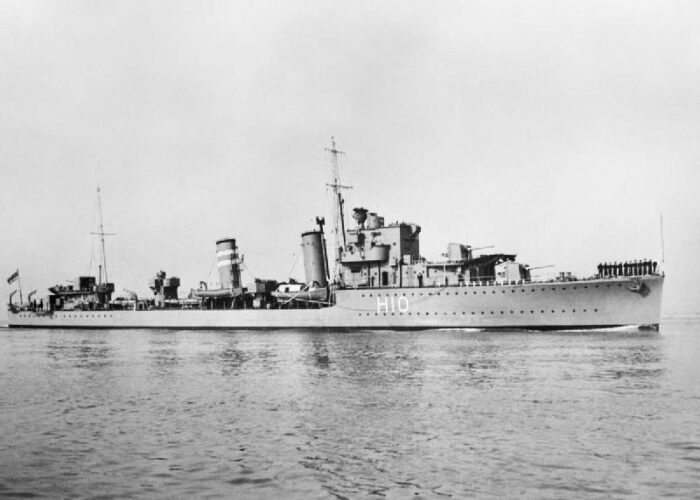
Encounter was laid down at Hawthorn Leslie on 29 March 1934, launched on 2 November 1934; completed on 13 September 1934. She shared about the same career as Electra. So in short: 5th Destroyer Flotilla, Home Fleet, West Indies cruise Jan-March 1935. Collided with Escapade off Portland, 18 June, repaired Devonport 18 June–8 July. Mediterranean Fleet from September 1935 (Abyssinian Crisis). Collided with Echo on 19 November off Alexandria. Repaired at Malta until 8 February 1936. Bay of Biscay, Spanish Civil War patrols. Collision on 26 September 1938, repaired at Hebburn until October. Mediterranean Fleet, non-intervention patrols from Gibraltar in 1939. Refit 15 July-September, assigned to the 12th DF (reservists crew).
Convoy escort duties, Western Approaches Command. Scapa Flow, Norwegian Campaign, escorted the tanker SS British Lady to Flakstadøya, Lofoten on 12 April. Escorted Ark Royal and Glorious and Warspite, Valiant in Norway. Resceued pilots, was refuelled at Ankenesstranda on 14 May. Refitted at Sheerness (20 June-20 July), transferred to Gibraltar, 13th DF, Force H, escorted Argus underway. Operation Hurry, SW of Sardinia to fly Hurricanes to Malta on 2 August. On 13 September departed for the Dakar raid. Escorted back Barham. Escorted Berwick and Glasgow (Operation Coat) early November. Took part in the Battle of Cape Spartivento (Operation Collar). Escorted convoys south Africa January 1941, Operation Picket (attack on Tirso Dam, Sardinia). Operation Grog (raid on Geno). South Atlantic escort duties from Alexandria, 14 April. Drydocked in Malta, damaged by air raids of 29 April and 16 May. Repaired in Jul. Operation Substance 23–26 July. Operation Style, 22 August, attack on Tempio Pausania, Sardinia (diversion for mining Livorno).
South Atlantic Command in Septembe. Mediterranean Fleet from 16 October, convoys to Tobruk. 25 October under attack by Stukas of I./StG 1. Assisted the damaged Latona and rescued her crew. Eastern Fleet from Alexandria, 14 November met Prince of Wales and Repulse at Colombo 28 November. Arrived on 2 December.
Remained at Singapore until 20 January 1942, transferred to the 7th DF, China Force (ABDACOM) escorting convoys to the Dutch East Indies. She met her fate at the first Battle of the Java Sea.
25 February under VADM Conrad Helfrich, Royal Netherlands Navy, her fleet was tasked to reunit with RADM Karel Doorman’s Eastern Striking Force at Surabaya. She sortied with Jupiter and Electra, Exeter and Perth and departed Surabaya at 18:30 to patrol Eastern Java looking for an IJN convo spotted earlier. 27 February they were tracked by the Japanese, later attacked by eight bombers.
She was detached with 6 other DDs to intercept IJN Nachi and Haguro, exchanging fire at 15:47 (little effect) until reaching torpedo range. Exeter hit by a Type 96 torpedo and hit by gunfire, lost speed. Perth laid a smoke screen. At 17:20 at 10,000-18,500 yards (9,100 to 16,900 m) the British DDs were attacked by two Japanese destroyers, Encounter and Electra dodged and counter-attacked, hit Asagumo and Minegumo at close range, down to 3,000 yards (2,700 m). Asagumo was damaged by Electra but herself sank at 17:46, Exeter continued south, escorted by Encounter and Witte de With. She also took part in the Second Battle of the Java Sea.
On the 28th she sailed out with Exeter and USS Pope for Colombo, via the Sunda Strait. They were spotted and attacked by Nachi, Haguro, Myōkō and Ashigara, DDs Akebono, Inazuma, Yamakaze and Kawakaze on 1 March, 08:00. The allies laid smoke, turned to the east buu Exeter was limited to 26 knots and took a hit in a boiler room, lost all power at 11:20. Encounter laid a hiding smoke screen, helped survivors, but was soon hit herself and on fire. Lt Cdr. Eric Morgan ordered her scuttled to prevent capture, which was done on 12:10. Pope escaped but was sunk two hours later.
149 survivors of Encounter became POWs, 38 died in captivity. Her wreck was discovered on 21 February 2007 under 60–61 metres (197–200 ft) and back in 2016, like Electra she had been completely destroyed by illegal salvage operations.
 HMS Escapade (1934)
HMS Escapade (1934)

Escapade was laid down at Scotts Shipbuilding & Engineering Company in Greenock on 30 March 1933, launched on 30 January 1934 and completed on 30 August 1934. Her name remained unique in the Royal Navy and she was assigned to the 5th Destroyer Flotilla (DF), Home Fleet, West Indies cruise (January-March 1935) and collided with Encounter off Portland (18 June). Mediterranean Fleet, Abyssinian Crisis. The Spanish Civil War (January 1937 to March 1939). Collided with Eclipse on 18 January. Reserve on 16 June, Devonport, recommissionedn 2 August, Reserve Fleet Review.
In September 1939 she was reassigned to the 12th Destroyer Flotilla, escort and patrol. In the Channel she spotted and attacked an U-boat on 5 November and another 15 November, and rescued survivors from SS Navasota on 5 December. Underway with Convoy HN14 to Norway (25 February 1940) she spotted the U-63 (surfaced) before she dive. DCs attacked forced her to surface, sunk by gunfire from three destroyers later, but not her, so she was not credited.
She took an active part in the Norwegian Campaign from 7 April, was air attacked on 10 April but was unscathed. She screened HMS Southampton with Electra on 12 April and protected troopships to Harstad, 15-16 April and back. She covered the last evacuation convoys in June, adn escorted Ark Royal to Gibraltar. She was back in the channel with the 3rd Destroyer Flotilla in August but then followed Barham for Operation Menace (Dakar).
She escorted various convoys for the next eight months. In January 1941 she took part in Operation Rubble (Norwegian merchants escape) and escorted HMS Nelson looking for the “terrible sisters” (Scharnhorst and Gneisenau) in Operation Berlin. She escorted the Convoy HX125. She was refitted on the Tyne (27 May to 10 July). Reassigned to the 4th DF she escorted HMS Prince of Wales in August with PM Churchill to the Atlantic Charter conference, Newfoundland.
Next she escorted HMS Victorious and Furiousfor Operation EF. She took part in the Arctic convoys and Operation Dervish, PQ 1, PQ 6 and QP 4, then a refit at Immingham (9 February to 20 March 1942) and covered the Norwegian tanker Lind into Methil from Sweden. She covered the Convoys PQ 14 and PQ 15 and May covered HMS Trinidad from Murmansk to Iceland after damage. She Convoy QP 12 and was reassigned to the 5th DF on 5 June, escorted Convoy WS19Z to Malta (Operation Harpoon) and HMS Argus back. In the arctic she covered Convoy PQ 17 and was refitted at Liverpool(20 July to 24 September). She escorted HMS Furious to Gibraltar late October, then Convoys KMF1 and KMF2 for Operation Torch and Convoy MKF1(X). Refitted in the Thames (27 November-23 December) she then joined the Escort Group B3, Western Approaches Command, North Atlantic, for six months, Convoys HX 228, ONS 175, HX 232, and HX 239. Fitted with an Hedgehog at Cardiff from 3 June and 5 September 1943 she escorted Convoy ONS 18 and during an attack off Northern Ireland on 20 September, one rocket prematurely exploded, killing 15, wounding 10 (one mortally), destroying “B” gun and damaged the bridge and wheelhouse. She was alsmot a year in repairs. She was back on 30 December 1944.
She trialled the Squid ASW mortar in the 8th Escort Group until mid-1945 and escorted Norwegian personnel back home in May 1945. She trained with the ASW Flotilla, until decommissioned on 18 February 1946, stripped on 15 November, paid off as tender to HMS Tartar, sold for BU on 17 May, from 3 August.
 HMS Escort (H66, 1934)
HMS Escort (H66, 1934)
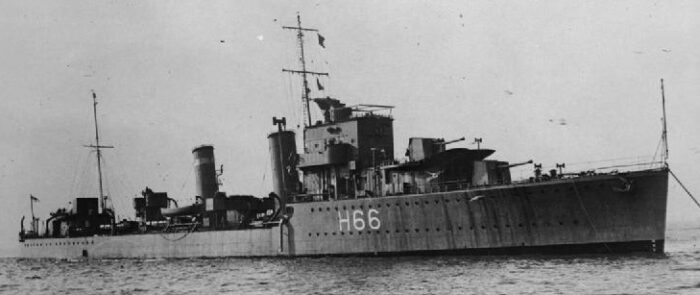
Escort laid down on 29 March 1934 at Scotts, launched on 30 October 1934 completed on 30 March 1933. Belonging to the 5th Destroyer Flotilla she had the same career as above prewar: West Indies, Abyssinian Crisis, Spanish Civil War patrols. She escorted the light cruiser HMS Caledon of the Reserve Fleet and was not recommissioned until 2 August, reassigned to the 12th DF. On 3 September with Electra she rescued survivors from SS Athenia and was assigned to the Western Approaches Command, transferred to Rosyth (December), North Sea, refitted at Falmouth (10 January and 12 February 1940). On 25 February with HMS Inglefield and HMS Imogen she sank U-63, spotted by HMS Narwhal 90 miles (140 km) east of the Orkney Is.
Norwegian Campaign: She screening capital ships to the North Sea from 9 April. She towed the damaged Eclipse on 11 April to Sullom Voe. She escorted HMS Glorious and HMS Ark Royal from 25 April and Glorious when returning to Scapa Flow to refuel/replenish aircraft, from on 27 April. She collided with the Polish ocean liner Chrobry on 11 May (light damage). In the Home Fleet until 26 June, she was sent to Force H, Gibraltar from 2 July and was part of the attack on Mers-el-Kébir. In Operation MA 5, she escorted the carriers for a raid on Sardinia, but was torpedoed underway by the Italian sub. Guglielmo Marconi on 11 July after the attack was just being called off. The torpedo tore a 20 feet (6.1 m) gash and flooded both boiler rooms as it struck on the bulkhead. She sankl slowly enough rto be evacuated, with “just” 2 killed during the explosion ad foundered the next morning, the crew rescued by other ships.
 HMS Esk (H15, 1934)
HMS Esk (H15, 1934)
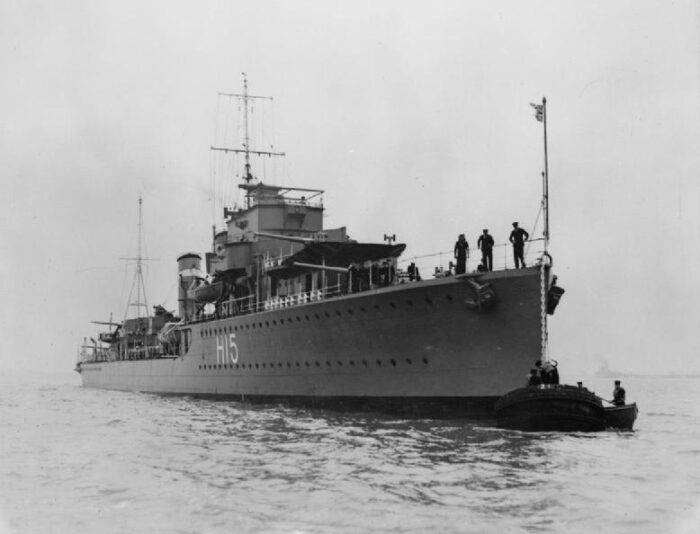
Esk was laid down at Swan Hunter & Wigham Richardson, Wallsend on 24 March 1933, launched on 19 March 1934 and completed on 28 September 1934. She was in the 5th DF and had the same early career, West Indies, Abyssinian Crisis, Spanish Civil War patrols, until her and Express were temporarily attached to the 9th DF at the Nore and trained in minelaying from 3 October 1938. In reserve from 24 June 1939, recommissioned on 2 August she was in the Reserve Fleet Review and converted as a minelayer from 28 August, until 7 September 1939. Attached to the 20th DF her first mission was to lay mines in the Heligoland Bight with Express (9/10 September) then escort HMS Royal Sovereign from Scapa to Portsmouth from 23–26 September with more minelaying operations from Milford Haven and Portsmouth. On 17–18 December with Express, and Intrepid and Ivanhoe she laid 240 mines off the mouth of the Ems before a refit at Portsmouth from 29 December to 26 January 1940.
Next she escorted the HMC HMS Princess Victoria and HMS Teviot Bank for six months as part of the East Coast Barrier minelaying missions plus their own. On 3 March, with her sister Express, Icarus and Impulsive she laid mines near Horns Reef, Heligoland Bight (claiming U-44 about 13 March) and back to Scapa joined “Force WV”, 20th DF for Operation Wilfred, the Vestfjord minefield to prevent Swedish iron ore from Narvik to Germany. On 5 April they departed with HMS Hardy, Havock, Hotspur, Hunter 2nd DF and laid 234 mines in Vestfjord, 8 April, before folding back to HMS Renown. On the 15th she was back while escorting Rodney.
On 10 May, with Express, Intrepid and Princess Victoria she laid 236 mines off Bergen. On 15 May with Ivanhoe she laid 164 mines off the Hook of Holland, later claiming M 61, M 89, and M 136 on 26 July. She was in Operation Dynamo at Dunkirk on 29 May, evacuating 3904 troops between 29 May and 3 June and rescued 1,000 French troops from the sunken TSS Scotia. On 31 August 1940 with Intrepid, Icarus, Ivanhoe and Express she laid mines north of Texel. She assisted Express after she hit a mine in a new German field that night and then Intrepid which closed to assist and hit another mine. Later Esk hit a mine herself and 15 minutes later drifted on another amidships. Esk broke in two, quickly sank with 127 going down, remaining survivors picked by the Germans and ended as POWs until 1945.
 HMS Express (1934)
HMS Express (1934)
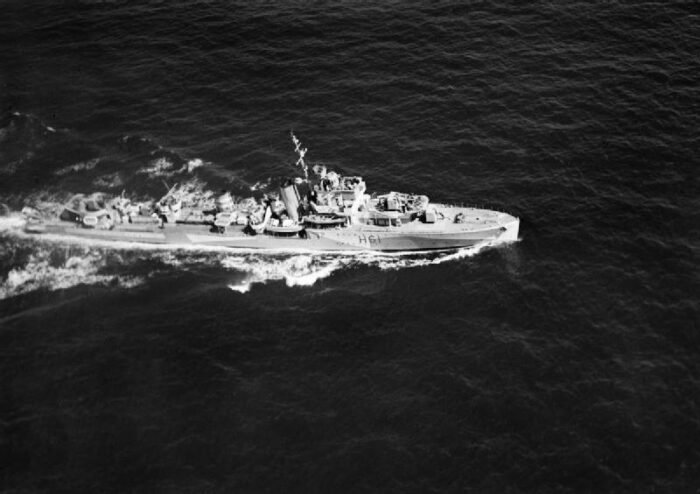
Express was laid down on 29 May 1934 at Swan Hunter on 2 November 1934. She was transferred to the RCN as HMCS Gatineau. She had the same eary career as er sister Esk as minelayer; She was at first assigned to the 5th DF, Home Fleet, missed the West Indies cruise but was in the Abyssinian Crisis patrol, then Spanish Civil War neutrality patorls. After a Portsmouth refit (9 August–2 October) a fire broke in her forward boiler room due to faulty electrical cabling and she was repaired at Gibraltar (24 October to 3 December 1937). She returned in Spanish waters based out of Gibraltar in 1938. She alerady operated as minelayer from 15 August to 4 October, and had a refit at Portsmouth from 21 November to 16 January 1939, then bach to Gibraltar. She escorted French President Albert Lebrun, across the Channel on 21 March for a state visit. She became a boy’s and AA training ship in June but instead went into Reserve from 5 August.
1939-1940 Minelaying Operations
On 8 September 1939 she joined Esk at Immingham, North Sea for a first minelaying sortie at Heligoland under direct orders of CiC Admiral Sir Charles Forbes. She laid other mines off the English coast in November and on 12 December she became flotilla leaders of the 20th DF with the newly converted Intrepid and Ivanhoe to lay 240 mines off the mouth of the Ems (17–18 December) before a refit at Portsmouth.
Express and Esk began laid other defensive minefields in February 1940, with the auxiliary minelayers Princess Victoria and Teviot Bank, Horns Reef (Heligoland Bight) claiming U-44, U-50, U-1, U-25. She collided with the fishing trawler Manx Admiral off Kinnaird Head (23 March), repaired until 24 April.
She led the minelaying of 9/10 May in the Heligoland Bight and escorted Princess Victoria off Egmond after the German NL invasion of 10 May. She retruned for more missions off Dutch waters, then evacuations of Dunkirk. On 29 May she towed the badly damaged French DD Jaguar in Dunkirk harbour and evacuated many troops. RADM Frederic Wake-Walker made her his flagship and during air raids she was damaged by bomb splinters on 31 May. Witg Shikari they were the last to leave Dunkirk on 4 June, for a total of 3,419 troops.
Still leading the 20th DF, she was back in minelaying ops from 15 June. On 31 August 1940 with Esk, Icarus, Intrepid, and Ivanhoe she ventured off Texel, but soon they bundered in a new German minefield. Express was hit first, Esk and Ivanhoe closed for assistance and were later hit in turn, but Express ordered the other two to turn hard to starboard adn try to exit the minefield. Esk lost her bow, Ivanhoe as well later and around 23:20, Esk hit another mine detonating her magazines, breaking her in two. By 01:40, Express was able to raise steam and steamed astern to minimise water pressure on the bulkheads.
Informed, the Admiralty sent nine MTBs in assistance to Express and Ivanho as they were too shallow to detonate moored mines. The 5th DF was also informed to satay out, under orders by then Captain Louis Mountbatten. Later the crippled DDs were reported by a Lockheed Hudson 25 miles (40 km) east of his position. The MTBs reached them first at 08:00, and evacuated Express’s crew. Mountbatten arrived at 08:40, HMS Kelvin took her in tow at 9:00 minutes then Jupiter when the towing cable was cut. At 19:45 tugboats took over, freeing Jupiter for possible Stuka atacks. Express was back at at Hull at 17:30 on 2 September 1940, repaired at Chatham until 4 October 1941
Far East Operations
Given the war changed in between, she was sent to escort Prince of Wales to the Far East with Electra on 25 October, making it in Colombo on 28 November and joined by Encounter and Jupiter escorting Repulse. They arrived in Singapore on 2 December. Force Z put to sea on 8 December trying intercept the Malaya invasion convoys escorted by Electra, Express, Tenedos, and HMAS Vampire. They were spotted on 9 December by I-65, conformed later by floatplanes from cruisers, keeping track until dark. Admiral Sir Tom Phillips decided to cancel the operation and they turned back, sailing to Singora. At 00:50, 10 December he was signalled the landings at Kuantan and altered course to arrive after dawn, but were spotted by I-58, attacked but missed. 11 reconnaissance aircraft located them before dawn and hours later they were attacked by 86 Mitsubishi G3M bombers (22nd Air Flotilla, Saigon). The destroyers reached Kuantan at 07:50, Express sailed to investigate, found nothing but was spotted by another G3M “Nell” at 10:15, radioed to the other bombers which ignored the destroyers and sank both Prince of Wales and Repulse at 13:20. Electra and Vampire moved back to rescue survivors from Repulse, Express rescued survivors from Prince of Wales (2,081 survivors).
Later Express escorted HMS Teviot Bank, Kung Wo, and the Dutch Willem van der Zaan laying a defensive minefield around Singapore. On 24 December, she laid herself 18 mines across the entry to the harbour of Penang. She escorted convoys to and from Singapore and Dutch East Indies until transferred to the China Force, ABDACOM command from 20 January 1942. She had a boiler room fire on 6 February and escorted a convoy to Simonstown in South Africa from repairs (25 April to 26 June).
Next she joined the 12th DF, Eastern Fleet, Indian Ocean, escorting Illustrious on 10 September for the landings at Majunga, Operation Ironclad (Madagascar) and was back home in February 1943, converted as an escort destroyer.
Canadian service
As HCMS Gatineau
The conversion was completed on 2 June and she loaned to the Royal Canadian Navy as Gatineau. On 15 June, she was assigned to Escort Group C3, Mid-Ocean Escort Force, North Atlantic: Convoy HX 280 (co-claimed U-744 6 March 1944), then 11th Escort Group (Derry) for Operation Overlord. Halifax back in July for a refit until 16 February 1945. ASW Training School at Tobermory, then patorls in British waters until May 1945. Refitted in Halifax 11–19 July, transferred to the West Canadian Coast, paid off into reserve, Esquimalt 10 January 1946, struck 1 April 1947. Sold for BU but her hull ended as a breakwater at Royston in British Columbia with remains still there by 2004.
F class Destroyers
 HMS Fame (H78, 1934)
HMS Fame (H78, 1934)
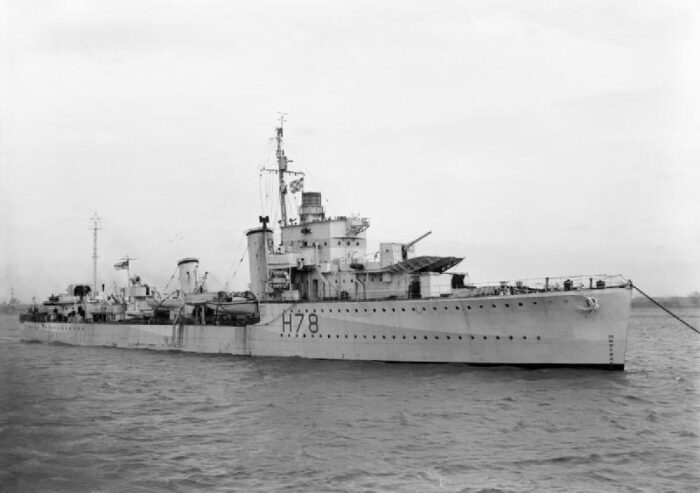
Fame was laid down at Parsons, Wallsend on 5 July 1933, launched on 28 June 1934 and completed on 26 April 1935. Assigned to the 6th DF Home Fleet, she had her ammunition hoists modified at Devonport (23 July-28 August) and was sent in the Mediterranean for the Second Italo-Abyssinian War. Refitted again at Devonport (20 July to 10 November 1936) she patrolled during the Spanish Civil War and visited Aarhus in Denmark in July and back off Spain by August–September. He unit was renamed the 8th DF in April 1939, and she remained with it until July 1940, escorting capital ships and cruisers.
Norwegian Campaign: Landings on 12–13 May, Bjerkvik, Battle of Narvik. 30-31 May, evacuated troops from Bodø to Harstad and Borkenes and from Narvik on 7-8 June. 6 July, attacked and hit by bomb splinters, under repair until 10 October. Ran aground on 17 October with Ashanti off Whitburn, County Durham coast while escorting King George V, severely damaged, freed on 1 December, repaired at Sunderland and Chatham over 18 months. In betwee it was decided to convert her as a convoy escort destroyer.
Atlantic: Operational by September 1942, she joined Escort Group B6 under Commander R. Heathcote as senior officer. She escorted SC 104, major convoy battle seeing many losses for 2 U-boats sunk, 2 damaged. She located by sonar U-353 on 16 October, depht-charged, forced to surface, rammed and sunk by HMS Game, but this damaged her bow. Left the convoy for repairs but rescued the sub’s 39 survivors. In December shs escorted Convoy ON 155, and helped ON 154 under heavy attack after Escort Group C1 commander collapsed from exhaustion after five-day (14 losses for one U-boat sunk).
In February 1943, she was lef Escort Group B6 for Convoy ONS 165, 2 losses, 2 U-boats sunk, she personally sank U-69 on 17 February 1943. Reassigned to patrol duty, South-Western Approaches in May 1944 she helped the Normandy landings as senior ship, 14th Escort Group and sank U-767 with Inconstant and Havelock on 18 June. Next she was sent to patrol the west coast of Scotland, interrupted by a refit at Leith in May 1945, until August. Next she was sent to Rosyth Escort Force, and Londonderry Training Flotilla, then senior officer’s ship for the 3rd Flotilla, reserve in May 1947, reactivated, refitted in June 1948, sold with Hotspur on 4 February 1949 to the Dominican Republic, refitted with a modern Type 291 and US SG-1 radars and four 40 mm Bofors AA, 4 DCs, 2 DCT and 70 depth charges. As “Generalisimo” and later “Sanchez” in 1962 she was scrapped in 1968.
 HMS Fearless (1934)
HMS Fearless (1934)

Fearless was laid down at Cammell Laird, Birkenhead on 17 March 1933, launched on 12 May 1934 and completed on 22 December 1934. Pat of the 6th DF Home Fleet, she had the same early career as above (2nd Italo-Abyssinian, Spanish Civil War until March 1937). She notably the liner SS Habana, full of refugee children, from the Basque Country to Saint-Jean-de-Luz in France. Her unit became the 8th Destroyer Flotilla in April 1939. After fishing trawlers were sunk by a U Boat off the Hebrides, the 6th and 8th DFs were sent to search the area on 19 September and indeed managed to locate and sink U-27. Patirls went on until March 1940. Fearless and Hostile escorted Birmingham in search of German trawlers off the Norwegian coast. Next they covered Operation Wilfred, the minelaying of Vestfjord. She escorted HMS Valiant covering Convoy NP1 to Norway (Plan R 4, post German invasion 9 April). After the landings at Harstad U-Boat was signalled in the area of Vågsfjorden. Fearless, Brazen, were ordered to investigate and they located and depht charged U-49. Kapitänleutnant Curt von Gossler, panicked and ordered to surface and scuttle his sub, and the crew was forced to leave under Machinegun fire. A party from Brazen boarded the board and retrieve many documents, such as map showing the location of all U-boats in Norwegian waters.
From 23 April, she escorted Ark Royal and Glorious to Norway for support. Fearless was in refit from 15 May to 10 June at Middlesbrough. Next she escorted Hood and Ark Royal with Faulknor, Foxhound, Escapade, to Gibraltar as Force H. On 3 July she took part in Operation Catapult. Next this was Operation Hurry, to Malta and raid on Cagliari. While underway back home she collided with the trawler Flying Wing, repaired at Barclay Curle, Scotstoun between 10 August and 11 October. On the 30th she collided with SS Lanark at Greenock, stern broken, repaired at Troon, so she was back at Force H from 18 January 1941. She took part in Operation Picket a failed Swordfish raid on the Tirso Dam, Sardinia. Next this was Operation Grog, a naval bombardment of Genoa. She escorted HMS Sheffield intercepting a Vichy French convoy and nitably freighter SS Bangkok (reported loaded with 3,000 metric tons of rubber) but it had been previously unloaded. Fearless was prevented to capture Bangkok by gunfire from a battery at Nemours, Algeria. Next she escorted Sheffield, Renown, and Ark Royal in Operation Winch to Malta.
In early May she escorted Queen Elizabeth, Naiad, Fiji and Gloucester for Operation Tiger to the Middle East. She was equipped with her TSDS minesweeping gear en route to Malta. Next she escorted flying-off mission to Malta on 14 June. She took part in a blockade runners Arlantic sortie. She hemped sinking U-138 on 18 June and with 4 other DDs intercepted the blockade runner MV Alstertor, scuttled by her crew upon arrival. Rescued 78 British POWs.
Next she was in Operation Substance by mid-July when she was torpedoed by a lone Savoia-Marchetti SM.79 at 09:45 on 23 July. The blast killed 27 and wounded 11 and set alight her aft oil tank. She lost all power and her port propeller shaft. Forester assisted her but it was too late for towing her and the crew was evacuated. She was scuttled by torpedoes at 10:57 and sank 50 nmi (93 km; 58 mi) NNE of Bône in Algeria.
 HMS Firedrake (H79, 1934)
HMS Firedrake (H79, 1934)
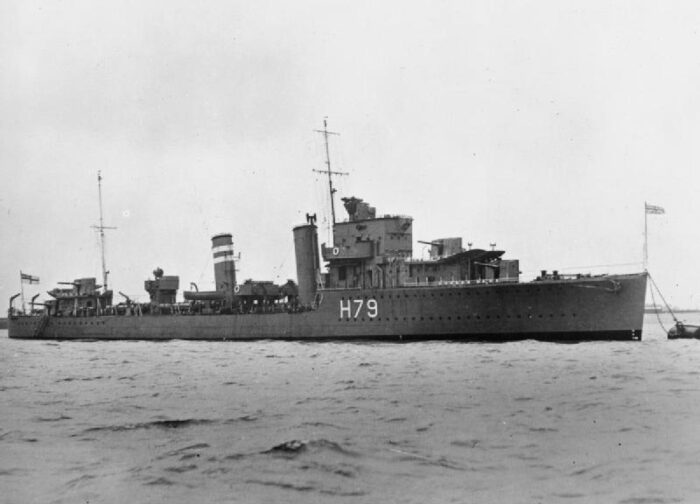
Firedrake was laid down at Parsons, Wallsend on 5 July 1933, launched on 28 June 1934 and completed on 30 May 1935. Part of the 6th DF (8th DF in 1939) she took part in the Abyssinian crisis, Spanish Civil War and escorted Hood, escorting a British merchantman into Bilbao because of the presence of the Nationalist cruiser Almirante Cervera blockading the port. In 1938 she patrolled the Spanish coastline in the Bay of Biscay until 1939 and by September she was part of the ASW hunting group Ark Royal. On 14 September, U-39 narrowly missed her. Firedrake, Faulknor and Foxhound sank her NW of Ireland. On 5 October she rescued the crew from the freighter SS Glen Farg. In February 1940 she escorted Convoy TC 3 from Canada to the UK and collided with Icarus at Invergordon on 28 March, repaired until 26 April at Cardiff.
Norwegian Campaign: She supported the landings on 12–13 May at Bjerkvik and took part in the Battle of Narvik. 30-31 May, she evacuated troops from Bodø and from the Narvik area on 7-8 June, damaged by splinters, air attack on 23 May and 12 June. Lost her port steering motor and ‘A’ gun, repaired 8 days later.
Force H: She joined the 4th DF and back to the 8th DF in mid-August escorting Valiant and Illustrious to Gibraltar on 29 August and then to the Western Mediterranean for Operation Hats. On 18 October, she attacked, forced to surface and captured the Italian submarine Durbo, east of Gibraltar with Wrestler and two Saro London flying boats (202 Squadron RAF). A boarding party captured cipher and operational documents. This revealed the position of Lafolè, sank 2 days later. She escorted Argus and Ark Royal for Operations Coat and Op. White in November to Malta as well as Force F to Malta in Operation Collar and was part of the Battle of Cape Spartivento on 27 November with Renown and Ramillies.
On 1 January 1941, she intercepted a Vichy French convoy off Mellila, four merchant ships. Next she was in Operation Excess, Operation Picket, Operation Grog. She accidentally ran aground in fog near Gibraltar (1 March), received preliminary repairs and full ones at Chatham from 19 June.
She was in Operation Substance with Foxhound using their TSDS through the Sicilian Narrows on 23 July when ai attacked. She had a bomb near-miss on her port side blew the plating of No. 1 boiler room, disabled, so she towed back to Gibraltar by Eridge. She completed repairs at Boston Navy Yard and was refitted as convoy escort.
Atlantic: She escorted Convoy NA 2 in January 1942, Escort Group B7 and later Convoy ON(S) 94 in May, repelling U-406. She rescued survivors from MV Olaf Fostenes on 26 September. She escorted Convoy ON 144 on 18 November. On 16 December with Convoy ON 153, she was torpedoed by U-211 at 19:11, broke in two with her bow sinking immediately, the stern staying afloat until 00:45 with 26 survivors picked up by the corvette Sunflower picked up 26 survivors.
 HMS Foresight (1934)
HMS Foresight (1934)
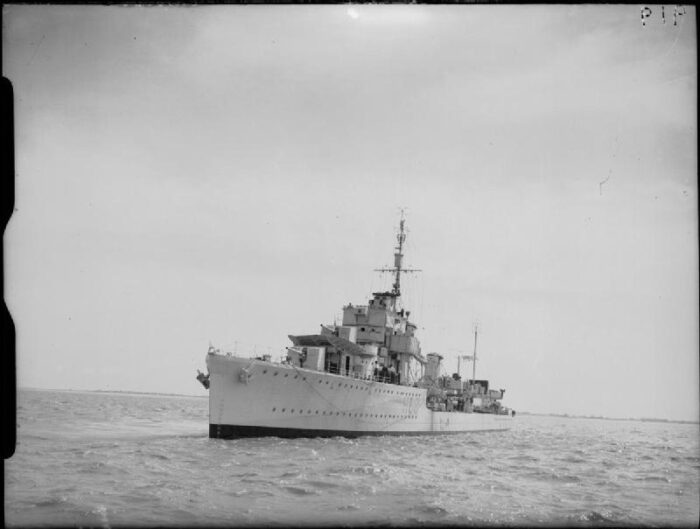
Foresight was laid down at Cammell Laird, Birkenhead on 21 July 1933, launched on 29 June 1934 and completed on 15 May 1935. As all other F-class destroyers she was assigned to the 6th Destroyer Flotilla, Home Fleet, 8th in April 1939. In September she escorted capital ships and took part shortly in the Norwegian Campaign in April-May early 1940. By late June she followed the flotilla to Gibraltar and Force H. She was in Operation Catapult, and 13 September intercepted a Vichy French troopship convoy underway to Dakar. She took part in the attack of the latter’s base and with Inglefield sank the French sub. Persé and herself alone, the Bévéziers on 25 September 1940. She was home for a refit and while in Liverpool was damaged by splinters after a Luftwaffe attack, as par tof the late “blitz” on 21/22 December.
On 31 January 1941 she was back ti Force H and took part in Operation Picket, then Operation Grog, and escorted Ark Royal reinforcing Malta on 3 and 27 April. In May she escorted Queen Elizabeth and Naiad, Fiji and Gloucester in Operation Tiger and was fitted with her TSDS gear to clear the way en route to Malta. Next she escorted Force H during the sortie of Bismarck and Prinz Eugen after the Battle of the Denmark Strait. She made another escort to Malta on 14 June and was sent to intercept German blockade runners reaching France with Faulknor, Fearless, Forester and Foxhound. They sank U-138 on 18 June. Late July saw another mission to Malta and she had to scuttle the damaged Fearless on 23 July. She also took part in Operation Halberd but as fast minesweeper.
Back home she escorted capital ships of Home Fleet for 6 months. By early April 1942, with Forester and Edinburgh she covered Convoy PQ 14 to Murmansk and later Convoy QP 11 to Iceland. Edinburgh was torpedoed on 29 April and later finished off by three German destroyers valiantly defended by the two destroyers. Foresight had eight 8 killed, 11 wounded in this battle but survived, recusing the cruiser’s survivors and she scuttled her with a torpedo. After repairs at Murmansk she escorted HMS Trinidad in May, damaged and scuttled on 15 May by Matchless after Luftwaffe attacks. In June Foresight was under repair and sent to the Med and Force H again. She took part in Operation Pedestal to Malta in August but on the 12th, she was torpedoed by an Italian SM.79 bomber at 18:45. The torpedo broke her keel, flooded compartment, and she lost all power with 1 officer and 3 ratings dead in the detonation. HMS Tartar came to help, but Foresight was still capable of steaming at two knots, allowing to sent a towline at 19:30. However that towing wire fouled HMS Tartar’s starboard propeller so another was rigged by 20:40 but slipped when it was signalled an approaching unknown cruiser and two destroyers. When it ws quiet again at 22:30, Tartar secired her to evacuate part of the crew but at 05:15 cables snapped and another towline attached at 06:10, and dropped when a submarine periscope was spotted at 09:30. Depth charges were dropped but ASDIC revealed nothing. Axis aircraft were spotted all along however and it was clear an attack was imminent. The remaining crew was evacuated and she was scuttled with torpedoes at 09:55.
 HMS Forester (HMS 1934)
HMS Forester (HMS 1934)
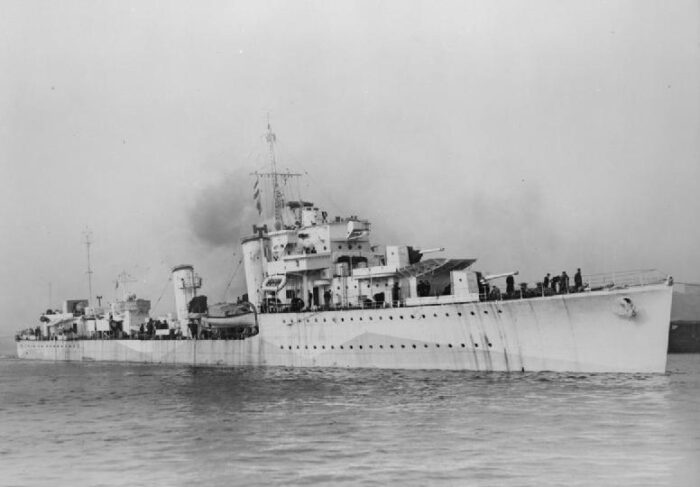
Forester was laid down at J. Samuel White, Cowes on 15 May 1933, launched on 28 June 1934 and completed on 29 March 1935. She was attached to the 6th DF, Home Fleet, sharing the same interwar career as her sisters (Abyssinian crisis, Spanish Civil War). On 6 April 1937 she escorted the British-flagged Jenny to Santander with HMS Shopshire but on the 27th whe doing the same to Consett, the latter was shelled by the battleship España, forced out. Now part of the 8th DF April 1939 she was assigned to it until June 1940. On 19 September she as sent to the Hebride after U-Boat reports and sank on the 20th, U-27. She helped towing MV Imperial Transport. She escorted HMS Warspite at the 2nd Battle of Narvik on 13 April, engaged German destroyers, being lightly damaged and she escorted the crippled HMS Cossack to Skjelfjord for temporary repairs. Next she escorted Rodney and Renown back to Scapa Flow to refuel. In June 1940 she escorted Repulse and two cruisers off Iceland and missed another German sortie (Operation Juno) as she was protected convoys evacuating Norway.
Like other vessels of the 8th DF she was sent to Force H, Gibraltar and took part in the attack on Mers-el-Kébir (OP. Catapult), Operation MA 5, the Operation Hurry to Malta and raid on Cagliari and the operation against Dakar. In October she escorted a troop convoy from Freetown to French Cameroon, which joined the FFL.
Back to Gibraltar she escorted Argus and Ark Royal (Operations Coat and White) in November. On 21 November, Despatch, Forester and Faulknor intercepted MV Charles Plumier and later she escorted Force F to Malta in Operation Collar and was the Battle of Cape Spartivento before Operation Excess. Forester and Faulknor protected Convoy WS 5B (Egypt via Good Hope) and stayed with the Freetown Escort Force. They escorted Convoy SL 67 and HMS Malaya to Gibraltar. On 7 March, Gneisenau and Scharnhorst spotted them but declined to attack. In April Forester ecorted Queen Elizabeth in Operation Tiger wit their TSDS and later Operation Splice. Next this was Convoy WS 8B (North Atlantic) on 24 May after the Battle of the Denmark Strait, detached for the Bismarck and Prinz Eugen and bacl to Force H on 29 May. Next Operations Rocket and Tracer, sinking of U-138, and Operation Railway.
In July, Operation Substance and they were attacked with Fearless by Italian torpedo-bombers. Next she was in Operation Style, Operation Halberd, Operations Status, Status II and Callboy and detached to the 11th Escort Group befor a refit via Scapa Flow in November until April 1942.
Next she accompanied Convoy PQ 14 to Murmansk and on 28 April, Convoy QP 11, and assisted the crippled Edinburgh, scuttled by Foresight. On 13 May with Foresight, Somali and Matchless she escorted Trinidad back from Convoy PQ 13. After an attack that crippled Trinidad she took some of the survivors. She was back with the 8th DF wit convoys to Russia until April 1943 and was refitted at Leith until June.
Next she joined the 1st Canadian Escort Group, Atlantic and on 10 March 1944 (Convoy SC 154) she sank U-845. Next she was in the Channel to support the Normandy landings. On 20 August with Wensleydale and Vidette she sank U-413 off Beachy Head. She fought also E-boats with Melbreak and Watchman with the Channel coastal convoy. In October she was detached to the 14th Escort Group, Londonderry Port and started a refit on December 1944 at Liverpool and in May was with the Rosyth Escort Force. She was paid off in August, reserve at Dartmouth, sold for BU on 22 January 1946.
 HMS Fortune (1934)
HMS Fortune (1934)
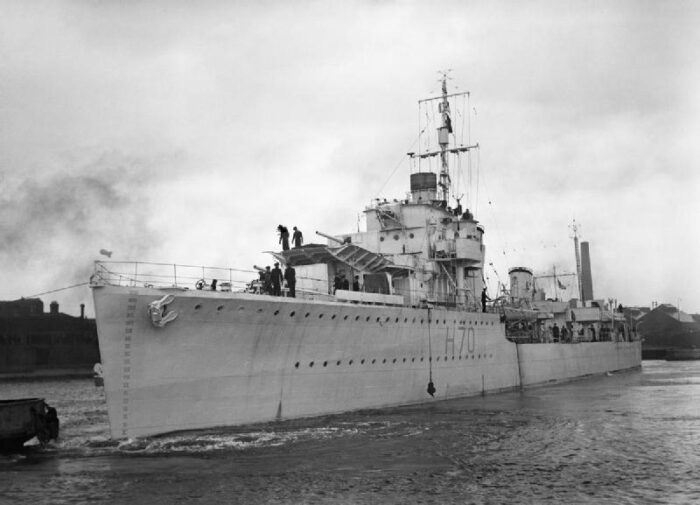
Fortune was laid down at John Brown, Clydebank on 25 July 1933, launched on 29 August 1934 and completed on 27 April 1935. She was transferred to the RCN as HMCS Saskatchewan in 1943. In short, 6th Destroyer Flotilla Home Fleet and seame early career as her sisters. Co-claimed U-27, Convoy TC 3 (Canada), co-claimed U-44, Norwegian Campaign, escorted the oiler RFA War Pindari to Namsos, carried the 2nd Battalion to Bogen-Lenvik. Escorted Ark Royal, Glorious, Valiant and cruisers ferrying troops to Iceland. 4th DF and on 10 August, rescued AMC Transylvania. Gibraltar, Force H, Operation Hats, Dakar (sank Ajax, 24th), Operations Coat, escorted Force F with TSDS, Operation Excess, Operation Winch, Operation Dunlop, Operation Tiger with TSDS gear. Badly damaged by air attack on 10 May, by a 250-kg (550 lb) nea-miss bomb: Hull ruptured, lost all power, propeller shaft bent, flooding. The crew jettisoned 18,000 pounds (8,200 kg) of topweight and she arrivaed to Gibraltar at 12 knots and final repairs in Chatham until November 1941.
February 1942: Escorted HMS Cleopatra to Malta, then MV Breconshire to Alexandria, 2nd DF (Eastern Fleet, Trincomalee) from 7 March, Force B before the Japanese Indian Ocean Raid. On 4 April, she rescued 88 from MV Glenshiel. Back in the Mediterranean, Operation Vigorous, then Indian Ocean, 12th DF, Illustrious, Operation Ironclad. 1943, escorted convoys in the Indian Ocean and back hom refit an converted as escort destroyer, but transferred to the RCN on 31 May 1943 as HMCS Saskatchewan, 15 June 1943. Escort Group C3, Mid-Ocean Escort Force, “Senior Officer’s” ship from Londonderry, the 12th Escort Group, May 1944, western entrance, English Channel after the Normandy landing. With Qu’Appelle, Skeena, Restigouche, she fought E-Boats boats off Brest on 5–6 July, sinking V715. Halifax 6 August, refit at Shelburne until November, escorts from St. John’s, Newfoundland. Next 14th Escort Group UK, 11th Escort Group. May 1945 saw her ferrying Canadian troops back home, 4 voyages. Declared surplus on 23 September, paid off 28 January 1946 at Sydney, sold for BU.
 HMS Foxhound (H69 1934)
HMS Foxhound (H69 1934)
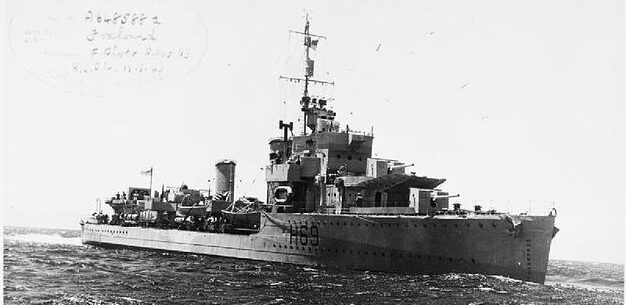
Foxhound was laid down on 21 August 1933, launched on 12 October 1934 and completed on 6 June 1935. She was transferred in 1944 to RCN as HMCS Qu’Appelle. She was part of the 6th Destroyer Flotilla, so same as above. While in northern Spanish waters she was mistook by a Republican destroyer and engaged, straddled by the Spanish nationalist minelayer Jupiter while off Gijon in August 1937. On 22 September 1938 she collided with HMS Seahorse, damaging a propeller, repaired at Sheerness. She was in 8th Destroyer Flotilla in April 1939, based in Scapa Flow. She was detached in Ark Royal’s ASW group, depth charged and sank U-39. She escorted Convoy TC 3 from Canada to the UK, rescued men from SS Orania on 11 February 1940. She was at the Second Battle of Narvik, with Icarus and Hero with their TSDS gear for Warspite into the Vestfjord to engage German destroyers on 13 April and then into the Rombaksfjorden. Foxhound rescued two officers and nine sailors from the badly damaged Z12 Erich Giese. She escorted troop convoys to Iceland, and the Repulse and two cruisers looking for commerce raiders off Iceland. She took part in the convoys evacuating Norway as well as Ark Royal and Hood to Gibraltar.
In August she was at Mers-el-Kébir. Next she was in Operation Hurry to Malta and the airstrike on Cagliari, Operations Coat and White, Operation Excess, Operation Picket, Operation Grog, Convoy WS 7, Operation Splice, Convoy WS 8B (North Atlantic) on 24 May 1941, detached to look for Bismarck and Prinz Eugen. Next another mission to Malta on 14 June, search for German blockade runners, sinking of U-138 on 18 June, interception of MV Alstertor, screened Ark Royal and Furious for Operation Railway. Operation Substance wuth TSDS bu Italian air attack in the Sicilian Narrows on 23 July. Next, Operation Style, then refit home until November. Escort Group EG.3, North Atlantic, convoy escort duties, Mediterranean Fleet in late December, Force B, she escorted the freighter Glengyle (Convoy MF 2 from Alexandria) to Malta (January 1942), then Convoy MF 3, detached to escort MV Thermopylae to Benghazi. 29 March, she is transferred to the Eastern Fleet, Force A, then South Africa, 2nd Destroyer Flotilla, 4th Destroyer Flotilla at Freetown by May–July 1943. Converted to an escort destroyer from August 1943, transferred to Canada on 8 February 1944. As HMCS Qu’Appelle she trained at Tobermory, was assigned to the Western Approaches Command, 6th Escort Group based (Londonderry) then 12th Escort Group, English Channel post D-day. Four E-Boats off Brest 5–6 July, lightly damaged. On 11 August she co-sank two German naval trawlers but was accidentally rammed by Skeena, repaired until 5 September 1944. Next, 11th Escort Group (Iceland until late November), refit in Halifax, Pictou, until 30 June 1945, 4 trips to ferry troops back to Canada. Stationary training ship, Torpedo School, Halifax, in reserve 27 May 1946, sold for BU December 1947.
 HMS Fury (H76 1934)
HMS Fury (H76 1934)

Fury was laid down at J. Samuel White in Cowes on 19 May 1933, 10 September 1934, launched on 18 May 1935. She was part of the 6th Destroyer Flotilla, Home Fleet, was at the Abyssinian crisis and on 11 December 1936, a day after the abdication broadcast she embarked The Duke of Windsor to Boulogne-sur-Mer. Like her sisters she was deployed in Spanish waters for the arms embargo and her unit became the 8th DF. On 15 September she escorted Ark Royal, co-claimed U-39 and escorted Nelson (damaged by a magnetic mine) to Loch Ewe. She escorted Convoy TC 3 from Canada, screen the damaged Suffolk after the Stavanger raid. From 23 April she escorted Ark Royal and Glorious for their operations off Norway and Glorious bacl to Scapa Flow. She escorted Valiant and later Repulse trying to intercept a expected German E-boats. She escorted the towed Kelly to Hebburn and was transferred to the Humber to face E-boats and R-Boote in the North Sea.
On 29 June she sailed to Gibraltar with the 8th DF, Force H: Operation Catapult, Operation Hats, attack on Dakar (engaged L’Audacieux), escorted a convoy from Freetown to French Cameroon, Operations Coat and White, Operation Collar, Battle of Cape Spartivento, Operation Excess, Operation Picket, Operation Grog, covered HMS Sheffield to intercept a Vichy French convoy, Operation Winch, and another mission from HMS Argus to Malta.
Next was Operation Tiger with TSDS, then Operation Splice, Convoy WS 8B, detached after the Battle of the Denmark Strait, then Operations Rocket and Tracer, sent to intercept a German supply ship, MV Alstertor and was in Operation Railway, Operation Substance, Operation Style, Operation Mincemeat and Operation Halberd.
After being transferred home in October for refit in the Humber shipyard she started Arctic convoys from 15 February 1942: Convoy QP 6, PQ 12, attempted to intercept Tirpitz underway from Narvik to Trondheim. She escorted Convoy PQ 13 and on 29 March while escorting Trinidad, Fury encountered German destroyers Z24, Z25, and Z26. Z26, was badly damaged by Trinidad but when launching atorpedo to finish off Z26, it circled around and struck her. Fury screened Trinidad into the Kola Inlet. Next she escorted Convoy QP 10 to Iceland and was in distant cover when Trinidad attempted to sail home in mid-May but was caught by the Luftwaffe. She covered the Convoys PQ 16 and QP 12, Convoy QP 17 (late June) and attacked en route U-456 with Wilton and Lotus on 2 July. She was retransferred to the Mediterranean in early August, joined Force X for Operation Pedestal in mid-August with TSDS gear and spotted, attacked MS 31, which sank the freighter SS Glenorchy. She escorted the damaged Nelson back home.
On 9 September 1942 she joined Convoy PQ 18, but detached for Convoy QP 14. She had a brief refit on the Humber and escorted the Convoys JW 51A and RA 51 to and from Murmansk and Convoy RA 53 (February 1943).
She was retransferred to the North Atlantic’s 4th Escort Group, escorted Convoys HX 231, HX 234 and ONS 5, ON 184 before another refit and 17 June, was in the Mediterranean Fleet for the Sicily landings, covering force and screening Warspite and Valiant, Orion and Mauritius bombarding Reggio Calabria (Operation Baytown) and then the landings at Salerno. She escorted the surrendered ships of the Regia Marina to Malta, and then to Alexandria.
Next she was in the Dodecanese Campaign. She supplied the Queen’s Own Royal West Kent Regiment at Haifa and the garrison on Leros. She escorted King George V and Howe from Alexandria to Malta, later screened Penelope and Sirius in the Dodecanese. On 7 October she met a small convoy south of Levitha, sank the escorting trawler Uj 2111 and 5,216-GRT freighter SS Olympos at short range but was by German aircraft which damaged Penelope. On 15/16 November she shelled Leros with Exmoor and ORP Krakowiak and escorted the torpedoed Birmingham back to Alexandria. After a convoy escort she was in refit until February 1944 and joined the 8th DF in the Mediterranean from 11 May, prepared and trained as shore bombardment ship for the Normandy landings. She departed Portsmouth for Force E, Juno Beach, 3rd Canadian Infantry Division and No. 48 (Royal Marine) Commando, in radio-ready support. On 5 June she escorted the minesweepers of Convoy J-1 and bomberded pôsitions with Faulknor, Venus, Stevenstone, La Combattante (FNFL), west of Courseulles with ammo resupplies at Portsmouth. On 21 June she detonated a ground mine off Juno Beach in a gale. She was towed to the British Mulberry harbour at Arromanches for evaluation, but took on a 6° list to starboard (flooding) but she accidentally collided with the stern of a freighter anchored outside the Mulberry. The towline snapped, she struck another ship, let go her anchor and drifted with wind and waves until halted by the salvage ship Lincoln Salvor, secured alongside. All tugs failed. She struck three other ships and was driven ashore at 01:30. The crew just walk away to Arromanches when the tide went out and she was high and dry. She was refloated on 5 July, towed back but declared her a constructive total loss. he was sold for BU on 18 September 1944.
Read More/Src
Books
Cocker, Maurice Destroyers of the Royal Navy, 1893-1981, 1983, Ian Allan
Conway’s All the World’s Fighting Ships, 1922-1946, Ed. Robert Gardiner, Naval Institute Press
M. J. Whitley Destroyers of World War II, An International Encyclopedia, Arms and Armour Press, 1988
Barnett, Correlli (1991). Engage the Enemy More Closely: The Royal Navy in the Second World War. New York: Norton.
Cain, T. J.; Sellwood, A. V. (1976). H.M.S. ‘Electra’. London: Futura Publications.
Colledge, J. J.; Warlow, Ben (2006) [1969]. Ships of the Royal Navy: The Complete Record of all Fighting Ships of the Royal Navy (Rev. ed.). Chatham Publishing.
English, John (1993). Amazon to Ivanhoe: British Standard Destroyers of the 1930s. Kendal, England: World Ship Society.
Friedman, Norman (2006). British Destroyers & Frigates: The Second World War and After. Annapolis, Maryland: Naval Institute Press.
Lenton, H. T. (1998). British & Empire Warships of the Second World War. Annapolis, Maryland: Naval Institute Press.
Rohwer, Jürgen (2005). Chronology of the War at Sea 1939–1945: The Naval History of World War Two (Third Revised ed.). NIP
Van der Vat, Dan The Atlantic Campaign: World War II’s Great Struggle at Sea (Harper and Row, New York, 1988).
Links
on en.wikipedia.org/
on navypedia.org/
navweaps.com 4.7 in/45 mk9
navweaps.com WWII brit torps
navweaps.com Brit Mines
E/F class on dreadnoughtproject.org
Faulknor on dreadnoughtproject.org/
on uboat.net/
on naval-history.net
on Pacificwrecks.com
on historyanswers.co.uk/
on naval-history.net/ Electra.htm
on commons.wikimedia.org/

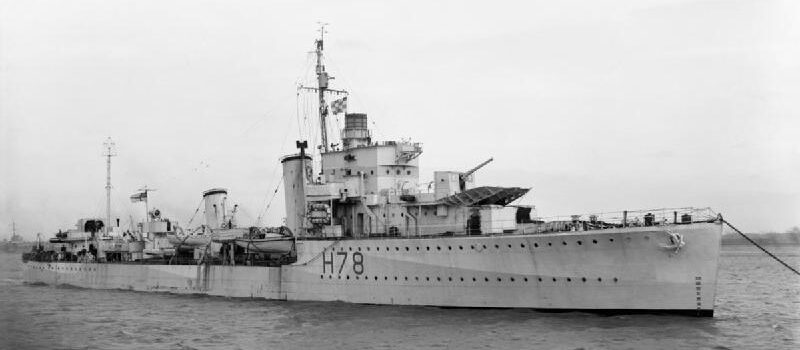
 Latest Facebook Entry -
Latest Facebook Entry -  X(Tweeter) Naval Encyclopedia's deck archive
X(Tweeter) Naval Encyclopedia's deck archive Instagram (@navalencyc)
Instagram (@navalencyc)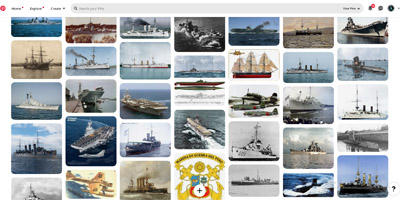

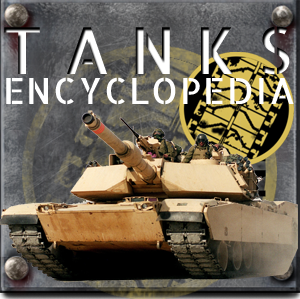
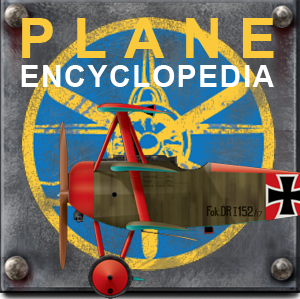
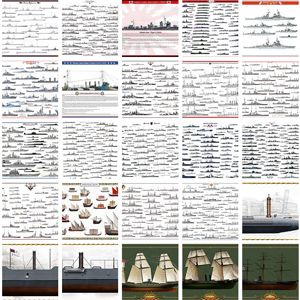
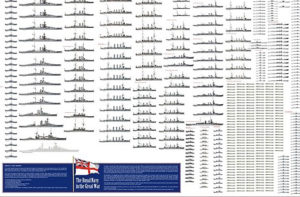
 French Navy
French Navy Royal Navy
Royal Navy Russian Navy
Russian Navy Armada Espanola
Armada Espanola Austrian Navy
Austrian Navy K.u.K. Kriegsmarine
K.u.K. Kriegsmarine Dansk Marine
Dansk Marine Nautiko Hellenon
Nautiko Hellenon Koninklije Marine 1870
Koninklije Marine 1870 Marinha do Brasil
Marinha do Brasil Osmanlı Donanması
Osmanlı Donanması Marina Do Peru
Marina Do Peru Marinha do Portugal
Marinha do Portugal Regia Marina 1870
Regia Marina 1870 Nihhon Kaigun 1870
Nihhon Kaigun 1870 Preußische Marine 1870
Preußische Marine 1870 Russkiy Flot 1870
Russkiy Flot 1870 Svenska marinen
Svenska marinen Søværnet
Søværnet Union Navy
Union Navy Confederate Navy
Confederate Navy Armada de Argentina
Armada de Argentina Imperial Chinese Navy
Imperial Chinese Navy Marinha do Portugal
Marinha do Portugal Mexico
Mexico Kaiserliche Marine
Kaiserliche Marine 1898 US Navy
1898 US Navy Sovietskiy Flot
Sovietskiy Flot Royal Canadian Navy
Royal Canadian Navy Royal Australian Navy
Royal Australian Navy RNZN Fleet
RNZN Fleet Chinese Navy 1937
Chinese Navy 1937 Kriegsmarine
Kriegsmarine Chilean Navy
Chilean Navy Danish Navy
Danish Navy Finnish Navy
Finnish Navy Hellenic Navy
Hellenic Navy Polish Navy
Polish Navy Romanian Navy
Romanian Navy Turkish Navy
Turkish Navy Royal Yugoslav Navy
Royal Yugoslav Navy Royal Thai Navy
Royal Thai Navy Minor Navies
Minor Navies Albania
Albania Austria
Austria Belgium
Belgium Columbia
Columbia Costa Rica
Costa Rica Cuba
Cuba Czechoslovakia
Czechoslovakia Dominican Republic
Dominican Republic Haiti
Haiti Hungary
Hungary Honduras
Honduras Estonia
Estonia Iceland
Iceland Eire
Eire Equador
Equador Iran
Iran Iraq
Iraq Latvia
Latvia Liberia
Liberia Lithuania
Lithuania Mandchukuo
Mandchukuo Morocco
Morocco Nicaragua
Nicaragua Persia
Persia San Salvador
San Salvador Sarawak
Sarawak Uruguay
Uruguay Venezuela
Venezuela Zanzibar
Zanzibar Warsaw Pact Navies
Warsaw Pact Navies Bulgaria
Bulgaria Hungary
Hungary

 Bundesmarine
Bundesmarine Dutch Navy
Dutch Navy Hellenic Navy
Hellenic Navy Marina Militare
Marina Militare Yugoslav Navy
Yugoslav Navy Chinese Navy
Chinese Navy Indian Navy
Indian Navy Indonesian Navy
Indonesian Navy JMSDF
JMSDF North Korean Navy
North Korean Navy Pakistani Navy
Pakistani Navy Philippines Navy
Philippines Navy ROKN
ROKN Rep. of Singapore Navy
Rep. of Singapore Navy Taiwanese Navy
Taiwanese Navy IDF Navy
IDF Navy Saudi Navy
Saudi Navy Royal New Zealand Navy
Royal New Zealand Navy Egyptian Navy
Egyptian Navy South African Navy
South African Navy






























 Ukrainian Navy
Ukrainian Navy dbodesign
dbodesign